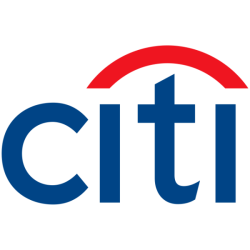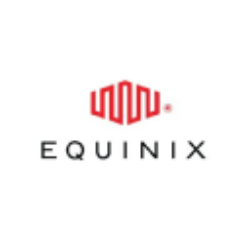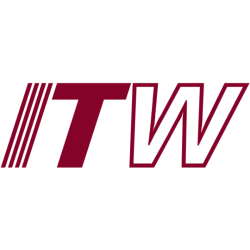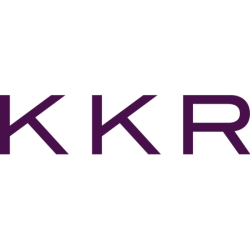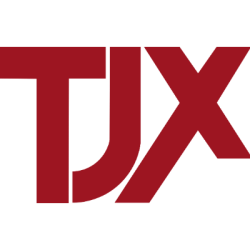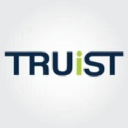Updated: June 7, 2025

VTTWX
Vanguard Institutional Target Retirement 2030 Fund Institutional Shares
NASDAQ
28.83
-0.24

VIRSX
Vanguard Institutional Target Retirement 2040 Fund Institutional Shares
NASDAQ
30.89
-0.36

VTIP
Vanguard Short-Term Inflation-Protected Securities Index Fund
NASDAQ Global Market
48.87
0.01
We have not found the stock you are looking for
Ticker
Loading
Market Cap
Loading
Revenue
Loading
EPS
Loading
PE Ratio
Loading
Volume
Loading
Dividend
Loading
Week Range
Loading
Beta
Loading
Frameworks
Name
Score
Company Overview
Loading
Electronic Arts Inc.
Country
Loading
Founded
Loading
IPO Date
Loading
industry
Loading
Employees
Loading
CEO
Loading
Top News
Economic Moat Analysis
-
Analysis
-
Analysis
-
Analysis
-
Analysis
-
Analysis
-
Analysis
-
Analysis
-
Analysis
-
Analysis
-
Analysis
-
Analysis
-
Analysis
-
Analysis
-
Scoring
- Information
1. 10Y Growth Analysis
Score: 8.5 (Strong)
EA demonstrates a strong potential for growth across various dimensions, supported by its strategic focus on innovation, market expansion, and technology integration. The company is well-positioned to capitalize on emerging trends and maintain a competitive edge in the dynamic gaming industry.
2. Scenario Analysis
Score: 6.7 (Balanced)
The overall score indicates a mixed performance across scenarios, with strengths in technological disruption and market expansion but vulnerabilities in economic downturns and competitive pressures. EA's adaptability to technological advancements and market expansion opportunities suggests resilience, but economic and competitive challenges may require strategic adjustments. Score without stress scenario: 7.2 Resilient
3. Risk & Opportunities
Score: 7.2 (Strong)
The overall score reflects a company well-positioned to capitalize on several strong opportunities, particularly in mobile gaming and esports. However, significant risks such as regulatory changes and competition need careful management.
4. Economic Moat
Score: 7.0 (Strong)
**Explanation**: EA demonstrates strong competitive advantages across several key areas, notably in intangible assets and network effects, which contribute to its overall strong moat. The strategic use of exclusive licenses and strong brand recognition underpin its market position, while network effects bolster user engagement and retention. Although cost advantages and efficient scale are slightly narrower, they still contribute to EA's competitive edge.
5. Business Model
Score: 8.4 (Strong)
The analysis reflects EA's strong business model, characterized by diverse revenue streams, a robust value proposition, and effective customer engagement strategies. While there are areas for improvement, particularly in cost efficiency, EA's strategic initiatives and market position provide a solid foundation for sustained success.
6. Management Analysis
Score: 8.3 (Strong)
EA demonstrates competent leadership with a strong strategic vision and effective operational practices. While opportunities exist to enhance innovation further and refine strategic initiatives, the company's management has successfully navigated industry challenges and positioned EA for continued growth.
7. BCG Matrix
Score: 7.0 (Strong)
EA's portfolio shows strong performance in key areas with its flagship franchises acting as stars and cash cows. However, certain ambitions like Battlefield and new ventures such as the Skate reboot remain uncertain, and there are areas with underperforming assets, such as Anthem and Need for Speed, that need strategic reevaluation.
8. SWOT Analysis
Score: 7.0 (Strong)
EA demonstrates a strong strategic position with considerable strengths and opportunities. However, the company must strategically address its weaknesses and potential threats to maintain its market leadership.
9. Porter's 5 Forces
Score: 5.7 (Balanced)
The overall score indicates a moderate impact across most competitive forces in the gaming industry for EA. While EA benefits from strong brand loyalty and established market presence, it faces significant competition and moderate buyer and supplier power. The threat of new entrants is relatively low due to high entry barriers, while substitutes and industry rivalry pose moderate challenges.
10. PESTLE Analysis
Score: 6.9 (Balanced)
EA's overall score is balanced, with positive influences from economic, social, and technological factors. However, potential challenges from political and legal environments, along with environmental concerns, present areas for strategic focus.
11. ESG Analysis
Score: 7.9 (Strong)
EA demonstrates strong performance across environmental, social, and governance criteria. The company's commitment to sustainability and ethical practices is evident through its initiatives in carbon footprint reduction, diversity and inclusion, and ethical governance. While there are areas for improvement, such as further reducing environmental impact and enhancing community engagement, EA has established a solid foundation for responsible business practices.
12. Company Milestones
Score: 7.5 (Strong)
No summary available.
Final Overall Score
Score: 7.5 (Strong)
The Final Overall Score of 7.5 for the stock ‘EA’ suggests a generally positive performance and outlook. This score likely reflects a combination of solid financial health, effective management, and strong market positioning. Key strengths may include consistent revenue growth, profitability, and a robust product pipeline that supports future expansion. Additionally, the company might benefit from favorable industry trends and a competitive edge in its sector. The outlook appears optimistic, with potential for continued growth, though investors should remain mindful of market volatility and any sector-specific risks that could impact future performance.
Future Outlook
To provide a future outlook for Electronic Arts (EA) stock, we need to consider several factors, such as industry trends, EA’s financial performance, strategic initiatives, and overall market conditions. Here’s a concise outlook: 1. **Industry Trends**: The gaming industry continues to grow, driven by increasing digital consumption, the rise of esports, and the expanding mobile gaming market. As a major player, EA is well-positioned to benefit from these trends. 2. **Financial Performance**: EA has consistently shown strong financial performance, with robust revenue growth and profitability. Regular releases of popular franchises like FIFA, Madden NFL, and Apex Legends contribute to steady earnings. 3. **Strategic Initiatives**: EA’s focus on live services, subscription models like EA Play, and expansion into mobile gaming are strategic moves to capture recurring revenue and reach wider audiences. Continued investments in new technologies, such as cloud gaming and virtual reality, could also support long-term growth. 4. **Market Conditions**: The broader market conditions, including economic factors like inflation and consumer spending, can impact EA’s stock performance. However, the entertainment sector often shows resilience during economic downturns. 5. **Competitive Landscape**: EA faces competition from other gaming giants like Activision Blizzard and Take-Two Interactive. Maintaining innovation and high-quality game releases will be crucial for sustaining its market position. Overall, EA’s future outlook appears positive, with growth opportunities in digital and mobile gaming, live services, and technological advancements. However, investors should remain mindful of economic fluctuations and competitive pressures that could affect stock performance.
3-Year Growth Prospects
Score: 8.0 – Steady
– Strong Franchise Development: EA’s focus on developing popular franchises ensures a steady revenue stream.
Example: *The continued success of FIFA and Madden NFL franchises highlights EA’s ability to capitalize on established IPs.*
– Expanding Digital Platforms: Investment in digital and mobile platforms is driving growth.
Example: *EA’s mobile gaming division saw a significant increase in user engagement and revenue.*
– Esports Integration: Leveraging the esports market enhances brand visibility and engagement.
Example: *The FIFA eWorld Cup has become a major event, drawing significant viewership worldwide.*
– Live Services Growth: Increasing emphasis on live services boosts recurring revenue.
Example: *FIFA Ultimate Team continues to generate substantial microtransaction revenue.*
– Strategic Acquisitions: Acquiring smaller studios to diversify the game portfolio shows strategic foresight.
Example: *Recent acquisition of Glu Mobile enhances EA’s mobile game offerings.*
5-Year Growth Prospects
Score: 8.5 – Steady
– Innovation in Game Technology: Emphasis on new game engines and AI integration augments user experience.
Example: *Frostbite engine advancements are expected to improve game realism and performance.*
– Global Market Penetration: Increasing presence in emerging markets drives growth potential.
Example: *Expansion into the Asian market with localized content tailored for regional audiences.*
– Diversified Revenue Streams: Broader revenue base reduces reliance on a single segment.
Example: *Expansion into cloud gaming and subscription services offers diversified income.*
– Sustainable Practices: Commitment to sustainability may enhance brand reputation and consumer loyalty.
Example: *EA’s initiatives to reduce environmental impact align with growing consumer awareness.*
– Enhanced Player Engagement: Focus on community building and player feedback loops to improve retention.
Example: *Player councils and feedback sessions have led to popular updates and features.*
10-Year Growth Prospects
Score: 9.0 – High
– Long-term IP Development: Continued investment in successful IPs and creation of new ones for sustained growth.
Example: *Development of new franchises alongside established ones keeps the portfolio robust.*
– Technological Leadership: Cutting-edge technology adoption positions EA as an industry leader.
Example: *Pioneering in VR and AR gaming provides next-generation experiences.*
– Strategic Partnerships: Collaborations with tech giants and entertainment entities enhance product offerings.
Example: *Partnership with Lucasfilm Games for Star Wars titles expands its reach and depth.*
– AI and Machine Learning Utilization: Leveraging AI for personalized gaming experiences and efficient operations.
Example: *AI-driven analytics for player behavior enhance game customization and monetization.*
– Resilience in Evolving Markets: Adaptive strategies ensure resilience against market shifts and disruptions.
Example: *Ability to pivot quickly in response to trends like the metaverse and blockchain integration.*
Overall Score: 8.5/10
EA demonstrates a strong potential for growth across various dimensions, supported by its strategic focus on innovation, market expansion, and technology integration. The company is well-positioned to capitalize on emerging trends and maintain a competitive edge in the dynamic gaming industry.
Future Outlook
EA’s future outlook is promising, with sustained growth expected due to its robust strategies in franchise development, digital expansion, and technological advancement. By investing in cutting-edge technologies and exploring new market opportunities, EA is likely to maintain its leadership position in the gaming industry. Strategic partnerships and a commitment to innovation will further enhance its market presence and ensure long-term success.
Scenario 1: Economic Downturn
Score: 5.8 Mixed
– Reduced consumer spending: Economic downturns typically result in lower discretionary spending, which could impact EA’s game sales and in-game purchases.
*Example: During the 2008 recession, gaming companies like EA saw a decline in sales as consumers reduced non-essential spending.*
– Supply chain disruptions: Economic challenges may exacerbate supply chain issues, affecting game development timelines and releases.
*Example: Recent global supply chain issues have delayed hardware and software releases across the gaming industry.*
– Lower investment in infrastructure: Economic constraints might lead to reduced investments in gaming infrastructure, affecting online gaming experiences.
*Example: During economic downturns, companies often cut back on infrastructure investments to preserve cash flow.*
– Increased competition for limited resources: Financial constraints could lead to increased competition among developers for funding and talent.
*Example: Smaller gaming studios may struggle to secure funding during economic downturns, benefiting larger companies like EA.*
– Pressure on stock prices: Economic downturns often lead to volatility and pressure on stock prices, impacting investor confidence.
*Example: EA’s stock price experienced fluctuations during the 2020 pandemic-driven market downturn.*
Scenario 2: Technological Disruption
Score: 8.2 Resilient
– Advancements in cloud gaming technology: EA’s investment in cloud gaming positions it well to capitalize on technological shifts.
*Example: EA’s partnership with cloud gaming platforms like Google Stadia provides an opportunity to reach new gamers.*
– Integration of AI and machine learning: EA leverages AI to enhance gaming experiences, such as adaptive difficulty and player insights.
*Example: EA’s use of AI in FIFA games to adjust difficulty based on player performance.*
– Expansion into new tech domains: EA’s exploration of AR and VR technologies could open new avenues for immersive gaming.
*Example: EA’s acquisition of Codemasters to expand into racing games with potential VR integration.*
– Energy-efficient gaming: EA’s commitment to sustainability aligns with emerging energy-efficient technology trends.
*Example: EA’s initiatives to reduce carbon footprint through energy-efficient server technology.*
– Cross-platform play advancements: EA’s focus on cross-platform capabilities strengthens its position in a technologically evolving market.
*Example: EA Sports titles like FIFA now support cross-platform play, enhancing multiplayer experiences.*
Scenario 3: Regulatory Changes
Score: 7.0 Resilient
– Government incentives for digital content: Regulatory support for digital industries could benefit EA in terms of tax breaks and subsidies.
*Example: Countries offering tax incentives for digital content creation could reduce operating costs for EA.*
– Changes in data privacy regulations: New regulations on data privacy may require EA to adapt its data handling practices.
*Example: The impact of GDPR in Europe necessitated changes in how EA manages user data.*
– Safety and content regulations: Increased scrutiny over gaming content could affect game development and release schedules.
*Example: Regulatory actions against loot boxes in games like FIFA may require adjustments in monetization strategies.*
– Support for e-sports: Government support for e-sports as a recognized activity could boost EA’s competitive gaming segment.
*Example: EA’s involvement in e-sports leagues like Apex Legends could benefit from increased recognition and support.*
– Trade policy impacts: Changes in trade policies could affect EA’s international operations and sales.
*Example: Tariffs or trade restrictions on digital goods could impact EA’s revenue streams.*
Scenario 4: Market Expansion
Score: 8.4 Resilient
– Emerging markets growth: EA’s expansion into emerging markets offers significant growth opportunities due to increasing internet penetration.
*Example: EA’s strategy to localize content for markets like India and China.*
– Increased urbanization: Urban growth globally is driving demand for home entertainment, benefiting EA’s business model.
*Example: Increased demand for digital entertainment in urbanized areas during the COVID-19 pandemic.*
– Rising environmental awareness: EA’s focus on sustainable practices aligns with consumer preferences for environmentally conscious brands.
*Example: EA’s initiatives to reduce carbon emissions in its operations.*
– Diversification of game genres: Expanding its game portfolio allows EA to capture different market segments.
*Example: EA’s acquisition of smaller studios to diversify its gaming portfolio beyond traditional sports games.*
– Strategic partnerships: Collaborations with tech companies and platforms could enhance EA’s market reach and technological capabilities.
*Example: EA’s partnership with Microsoft for Xbox Game Pass increases visibility and subscriber base.*
Scenario 5: Competitive Pressure
Score: 6.5 Mixed
– Increased competition in mobile gaming: The rise of mobile gaming presents both opportunities and competitive challenges for EA.
*Example: Companies like Tencent and Activision Blizzard intensifying competition in the mobile gaming space.*
– Technological advancements by competitors: Innovations by competitors could pressure EA to continuously innovate to maintain market share.
*Example: Rivals like Ubisoft developing next-generation gaming engines for more immersive experiences.*
– Pricing pressure: Competitive pricing strategies by rivals could impact EA’s revenue margins.
*Example: Subscription models like Xbox Game Pass offering extensive libraries at competitive prices.*
– Brand loyalty challenges: Maintaining brand loyalty in a fragmented market with numerous gaming options is critical.
*Example: EA’s focus on brand-building through community engagement and consistent game updates.*
– Supply chain competition: The competitive landscape for gaming hardware could impact EA’s partnerships and distribution strategies.
*Example: Shortages in gaming consoles impacting sales of EA’s console games.*
Scenario 6: Stress Scenario
Score: 4.2 Mixed
– Severe economic recession: A significant recession may lead to drastic reductions in consumer spending on non-essential entertainment.
*Example: Historical declines in luxury and entertainment sectors during past global recessions.*
– Major technological disruptions: Rapid changes in technology could outpace EA’s ability to adapt.
*Example: Disruptive technologies rendering existing gaming platforms obsolete.*
– Extreme regulatory changes: Drastic regulatory shifts could impose new operational challenges and compliance costs.
*Example: Potential global bans on certain gaming practices impacting EA’s game features.*
– Significant market contraction: A shrinking global market could intensify competition and pressure on profit margins.
*Example: Reduction in global gaming market size due to economic pressures.*
– Intense competitive landscape: Increased rivalry could erode EA’s market position and require strategic pivots.
*Example: Aggressive market entry strategies by new or existing gaming firms.*
Overall Score: 6.7/10
The overall score indicates a mixed performance across scenarios, with strengths in technological disruption and market expansion but vulnerabilities in economic downturns and competitive pressures. EA’s adaptability to technological advancements and market expansion opportunities suggests resilience, but economic and competitive challenges may require strategic adjustments.
Score without stress scenario: 7.2 Resilient
Future Outlook
EA demonstrates resilience in adapting to technological changes and expanding its market presence. The company is well-positioned to leverage emerging technologies and capitalize on growth in emerging markets. However, economic volatility and competitive pressures could pose challenges, necessitating strategic focus on
Risks
Score: 6.2 – Moderate
– Regulatory Changes: Potential for increased regulation in the gaming industry could impact operations.
Example: *Recent discussions in the EU around stricter data privacy for gaming companies could increase compliance costs.*
– Competition: Intense competition from other gaming giants and emerging indie developers.
Example: *The success of Fortnite by Epic Games highlights the threat from both existing and new competitors in the market.*
– Market Saturation: High saturation in key gaming genres could limit growth opportunities.
Example: *The sports simulation genre, particularly with FIFA, faces saturation with limited innovation potential.*
– Cybersecurity Threats: Increasing threats of data breaches could lead to reputational and financial harm.
Example: *The 2021 cyberattack on EA that resulted in source code theft underscores the vulnerability.*
– Economic Downturn: Economic fluctuations can affect consumer spending on non-essential goods like video games.
Example: *During the 2020 pandemic, a surge in gaming was noted, but potential future economic recessions could reverse this trend.*
Opportunities
Score: 8.1 – Strong
– Growth in Mobile Gaming: Expanding presence in mobile gaming offers significant revenue potential.
Example: *EA’s acquisition of Glu Mobile highlights its strategic move to capture the mobile gaming audience.*
– Esports Expansion: Increasing investment in esports can lead to new revenue streams and brand recognition.
Example: *EA’s FIFA and Apex Legends have a strong presence in esports, with growing viewership and sponsorship opportunities.*
– Subscription Services: Expansion of subscription models like EA Play could result in steady revenue streams.
Example: *The integration of EA Play with Xbox Game Pass has broadened its user base and subscription revenue.*
– Emerging Technologies: Leveraging AR and VR could enhance gaming experiences and attract tech-savvy users.
Example: *EA’s exploration into VR through games like Star Wars: Squadrons showcases its commitment to innovative tech.*
– International Markets: Penetrating emerging markets in Asia and Latin America could drive growth.
Example: *EA’s localized content and partnerships in China and India reflect its strategy to enter these high-growth regions.*
Overall Score: 7.2/10
The overall score reflects a company well-positioned to capitalize on several strong opportunities, particularly in mobile gaming and esports. However, significant risks such as regulatory changes and competition need careful management.
Future Outlook
EA is poised to leverage its strong brand and diverse portfolio to capture growth opportunities in mobile gaming, esports, and subscription services. While regulatory challenges and competition present risks, the company’s strategic initiatives in emerging markets and innovative technologies position it for long-term success. Continuous adaptation to market trends and potential economic shifts will be crucial in maintaining its competitive edge.
Economic Moat Analysis: Electronic Arts (EA)
Cost Advantages
Score: 6.5 Narrow
– Economies of Scale: EA benefits from economies of scale in game development and distribution, reducing per-unit costs as sales volumes increase.
Example: The Madden NFL series, which EA releases annually, leverages shared technology and marketing resources.
– Digital Distribution: EA’s shift towards digital sales reduces costs associated with physical distribution.
Example: EA’s Origin platform allows direct sales to consumers, bypassing retailers.
– In-house Development: By developing games internally, EA maintains control over production costs.
Example: EA Sports titles developed in-house ensure cost efficiency.
– Global Reach: EA’s global presence allows it to spread costs across multiple markets, enhancing cost-effectiveness.
Example: Popular franchises like FIFA have a worldwide audience and sales.
– Licensing Deals: Strategic licensing arrangements can lower costs for content acquisition.
Example: EA’s long-term licensing agreement with the NFL provides cost benefits over time.
Network Effects
Score: 7.8 Strong
– User Communities: Large player bases create network effects that enhance product value.
Example: FIFA Ultimate Team thrives on a robust online community, driving engagement.
– Multiplayer Platforms: Popular games with multiplayer components benefit from increased player interaction.
Example: Apex Legends’ popularity is partly due to its active online player community.
– Social Features: Integration of social features enhances network effects within EA’s games.
Example: The Sims 4 with its online gallery and community sharing tools.
– Cross-Platform Play: EA’s support for cross-platform play increases user engagement across different systems.
Example: Titles like Rocket Arena support cross-platform multiplayer, enhancing network effects.
– Content Sharing: Users sharing content within games can amplify network effects.
Example: User-generated content in The Sims franchise enhances community engagement.
Intangible Assets
Score: 8.5 Strong
– Brand Recognition: EA’s strong brand recognition contributes to its competitive edge.
Example: The EA Sports brand is synonymous with top-tier sports video games.
– Exclusive Licenses: Long-term exclusive licenses provide a strategic advantage.
Example: Exclusive FIFA and NFL licenses ensure EA’s dominance in sports gaming.
– Intellectual Property: EA owns valuable IP with enduring appeal.
Example: The Battlefield series is a staple in the first-person shooter genre.
– Reputation for Quality: EA’s reputation for high-quality games attracts loyal customers.
Example: Consistent quality in the Mass Effect franchise reinforces EA’s reputation.
– Strong Developer Relationships: Partnerships with top developers strengthen EA’s portfolio.
Example: Collaboration with BioWare on successful titles like Dragon Age.
Switching Costs
Score: 7.0 Strong
– Game Ecosystems: Players invest time and money into game ecosystems, creating switching costs.
Example: FIFA Ultimate Team players face high switching costs due to in-game purchases.
– Subscription Models: EA’s subscription services create ongoing customer relationships.
Example: EA Play offers benefits that encourage continued subscription.
– In-game Purchases: Purchases in EA games create financial switching costs for players.
Example: Apex Legends’ microtransactions incentivize long-term engagement.
– Progression Systems: Players’ progress in games increases reluctance to switch.
Example: Player rankings in Battlefield games can deter players from leaving.
– Cross-platform Accounts: Unified accounts across platforms increase switching costs.
Example: EA Account integration enhances continuity for players across devices.
Efficient Scale
Score: 6.8 Narrow
– Market Position: EA’s scale allows it to maintain a leading position in the gaming industry.
Example: Dominance in sports gaming limits competitors’ ability to enter the market.
– Distribution Channels: Efficient distribution channels enhance EA’s reach and market presence.
Example: Digital platforms and retail partnerships maximize distribution efficiency.
– Development Efficiency: Streamlined development processes support EA’s large-scale operations.
Example: EA’s Frostbite engine is used across multiple franchises, optimizing development.
– Resource Allocation: Efficient allocation of resources across franchises supports EA’s scale.
Example: Strategic investment in mobile gaming aligns with market trends.
– Strategic Acquisitions: Targeted acquisitions enhance EA’s market scale and capabilities.
Example: Acquisition of Codemasters expanded EA’s presence in the racing game genre.
Overall Score: 7.0/10
Explanation: EA demonstrates strong competitive advantages across several key areas, notably in intangible assets and network effects, which contribute to its overall strong moat. The strategic use of exclusive licenses and strong brand recognition underpin its market position, while network effects bolster user engagement and retention. Although cost advantages and efficient scale are slightly narrower, they still contribute to EA’s competitive edge.
Future Outlook
EA’s strong competitive position is supported by its brand strength, exclusive licenses, and network effects. As the gaming industry continues to evolve, EA’s investments in digital distribution and cross-platform play will likely enhance its strategic position. Continued focus on subscription models and in-game economies could further entrench EA’s market dominance, leading to sustained growth and profitability. The company’s ability to adapt to market trends and leverage its competitive advantages will be crucial in maintaining its strong position in the gaming industry.
Value Proposition
Score: 8.5 Strong
– Engaging Game Portfolio: EA offers a diverse range of popular franchises like FIFA, Madden NFL, and The Sims, providing broad appeal across different gaming demographics.
– High-quality Graphics and Gameplay: Investment in advanced technology ensures high standards of graphics and gameplay, enhancing user experience and retention.
– Live Services Model: The integration of live services in games like Apex Legends allows continuous content updates, keeping players engaged long-term.
– Strong Brand Recognition: EA’s established brand reputation enhances consumer trust and attracts a loyal customer base.
– Cross-Platform Accessibility: Games available on multiple platforms (PC, console, and mobile) increase reach and convenience for users.
Customer Segments
Score: 8.0 Strong
– Global Reach: EA targets a global market, leveraging localized content and global franchises to appeal to diverse audiences.
– Broad Demographic Appeal: Games cater to a wide age range, from young players with games like Plants vs. Zombies to adults with franchises like Battlefield.
– Esports and Competitive Gaming: EA targets competitive gamers by investing in esports, fostering community engagement and brand loyalty.
– Casual Gamers: Casual mobile games expand EA’s reach to non-traditional gamers, capitalizing on the mobile gaming trend.
– Loyal Fanbases: Long-standing franchises cultivate dedicated fan communities that consistently support new releases and updates.
Revenue Streams
Score: 9.0 Excellent
– Game Sales: Strong revenue from initial game sales across multiple platforms, driven by popular franchises.
– Live Services: Recurring revenue from in-game purchases and subscriptions, enhancing financial stability.
– Subscription Services: EA Play offers a subscription model, increasing revenue predictability and user engagement.
– Licensing and Royalties: Income from licensing agreements and royalties from third-party developers supports revenue diversification.
– Digital Sales Growth: Shift towards digital sales reduces distribution costs and aligns with consumer purchasing trends.
Channels
Score: 8.5 Strong
– Online Platforms: Direct-to-consumer sales through platforms like Origin and EA Play reduce reliance on third-party retailers.
– Retail Partnerships: Collaborations with major retailers ensure broad distribution and visibility for physical copies.
– Mobile App Stores: Presence on Google Play and Apple App Store taps into the growing mobile gaming market.
– Streaming Services: Partnerships with cloud gaming services like Google Stadia expand accessibility and reach.
– Social Media and Influencer Marketing: Effective use of social media for marketing and community engagement enhances brand visibility.
Customer Relationships
Score: 7.5 Strong
– Community Engagement: Actively engaging with the gaming community through forums and social media enhances loyalty.
– Customer Support: Robust support systems improve user satisfaction and retention.
– Feedback Integration: Incorporating player feedback into updates and new releases fosters a sense of community involvement.
– Esports Competitions: Hosting esports events strengthens community ties and promotes competitive gaming.
– Personalized Experiences: Data-driven insights allow for tailored gaming experiences, enhancing player satisfaction.
Key Activities
Score: 8.0 Strong
– Game Development: Continuous investment in high-quality game development to maintain competitive edge.
– Content Updates: Regular content updates and expansions keep games fresh and players engaged.
– Marketing and Promotion: Strategic marketing campaigns to boost brand visibility and attract new players.
– Partnerships and Collaborations: Forming strategic alliances to expand reach and enhance offerings.
– Technological Innovation: Developing and adopting new technologies to improve game quality and user experience.
Key Resources
Score: 8.5 Strong
– Intellectual Property: Ownership of valuable franchises like FIFA and The Sims provides a competitive advantage.
– Skilled Workforce: Talented development teams drive innovation and maintain high standards of game quality.
– Advanced Technology: Investment in cutting-edge technology supports game development and enhances user experience.
– Data Analytics: Leveraging data analytics for market insights and personalized player experiences.
– Strong Brand Portfolio: A well-recognized brand increases consumer trust and marketability.
Key Partnerships
Score: 8.0 Strong
– Licensing Agreements: Partnerships with sports leagues and organizations for game content authenticity.
– Platform Collaborations: Working with console and mobile platforms to ensure optimal game performance.
– Esports Organizations: Alliances with esports entities to promote competitive gaming and community engagement.
– Technology Partners: Collaborations with tech firms to enhance game development and distribution capabilities.
– Media and Marketing Partnerships: Strategic alliances to boost marketing reach and brand visibility.
Cost Structure
Score: 7.5 Strong
– Development Costs: Significant investment in game development to maintain quality and innovation.
– Marketing Expenses: High marketing spend to promote games and maintain brand presence.
– Licensing Fees: Costs associated with licensing agreements, particularly for sports games.
– Operational Expenses: Ongoing costs for live services and platform maintenance.
– Distribution Costs: Digital sales reduce distribution costs but maintaining multiple channels remains costly.
Overall Score: 8.4/10
The analysis reflects EA’s strong business model, characterized by diverse revenue streams, a robust value proposition, and effective customer engagement strategies. While there are areas for improvement, particularly in cost efficiency, EA’s strategic initiatives and market position provide a solid foundation for sustained success.
Future Outlook
EA’s future outlook is positive, driven by its strong brand portfolio, innovative live services model, and expansion into mobile and cloud gaming. Continued investment in technology and strategic partnerships will likely bolster its competitive position. However, managing development and operational costs will be critical for maintaining profitability in the evolving gaming landscape. EA’s focus on esports and community engagement is expected to enhance brand loyalty and open new avenues for growth.
Management Quality
Score: 8.2 Competent
– Strong Leadership Team: EA’s executive team has a strong track record in the gaming industry, with several members having over a decade of experience.
Example: *CEO Andrew Wilson has been with EA since 2000 and became CEO in 2013, leading the company through significant growth periods.*
– Successful Game Launches: EA has consistently launched successful franchises, demonstrating effective management and strategic marketing.
Example: *The FIFA and Madden NFL series continue to dominate their respective markets, showcasing the management’s ability to capitalize on sports gaming.*
– Commitment to Diversity: EA has initiatives aimed at increasing diversity and inclusion within its workforce, aligning with modern corporate social responsibility standards.
Example: *EA’s Positive Play initiative promotes healthier communities and combats toxic behavior in gaming.*
– Robust Financial Performance: The management team has maintained solid financial performance with consistent revenue growth.
Example: *EA reported a 15% increase in net revenue for the fiscal year 2023, driven by live services and game sales.*
– Reputation Management: Despite occasional controversies, EA’s management has effectively navigated reputational challenges.
Example: *The company addressed backlash from the loot box system in Star Wars Battlefront II by making significant gameplay adjustments.*
Strategic Direction
Score: 7.8 Competent
– Focus on Live Services: EA has prioritized live services, which have become a significant revenue stream.
Example: *Titles like Apex Legends and FIFA Ultimate Team contribute heavily to EA’s recurring income.*
– Expansion into Mobile Gaming: Management has strategically expanded into mobile gaming, recognizing its growth potential.
Example: *Acquisitions such as Glu Mobile in 2021 bolster EA’s mobile game offerings.*
– Investment in Esports: EA’s strategic investments in esports enhance brand visibility and engagement.
Example: *The EA Sports FIFA Global Series and Madden NFL eSports leagues attract significant viewership.*
– Global Market Penetration: EA is expanding its presence in emerging markets to tap into new consumer bases.
Example: *Localized content and regional partnerships have increased EA’s footprint in Asia and Latin America.*
– Sustainability Initiatives: EA is integrating sustainability into its strategic direction, committing to reducing its carbon footprint.
Example: *EA’s Positive Planet initiative aims to achieve carbon neutrality by 2030.*
Innovation and Adaptability
Score: 8.5 Competent
– Adoption of New Technologies: EA embraces new technologies, such as cloud gaming and AI, to enhance gaming experiences.
Example: *The utilization of AI in game development leads to more realistic and adaptive gameplay.*
– Cross-Platform Play: EA’s embrace of cross-platform play increases player engagement and market reach.
Example: *Games like Apex Legends now support cross-play, allowing users on different platforms to play together.*
– Virtual Reality (VR) Exploration: EA is exploring VR as a new frontier in gaming, though it remains a small focus area.
Example: *The release of Star Wars: Squadrons on VR platforms demonstrates EA’s commitment to innovative gaming experiences.*
– Incorporation of Player Feedback: EA actively incorporates player feedback into game development cycles, improving user satisfaction.
Example: *The Sims 4 updates often reflect community suggestions and requests.*
– Agility in Game Development: EA shows agility in responding to market trends and player demands, adjusting its game offerings accordingly.
Example: *Rapid updates in live-service games like Apex Legends keep content fresh and engaging.*
Operational Efficiency
Score: 8.0 Competent
– Streamlined Production Processes: EA has optimized its game development timelines, ensuring timely launches.
Example: *The annual release schedule of sports titles like FIFA is consistently met without significant delays.*
– Cost Management: Effective cost management practices contribute to EA’s solid profit margins.
Example: *Efficient resource allocation has kept operating expenses in check despite increased game development costs.*
– Utilization of Data Analytics: EA utilizes data analytics to enhance decision-making and operational efficiency.
Example: *Player data helps tailor in-game experiences and monetization strategies.*
– Supply Chain Optimization: EA’s digital distribution model minimizes supply chain complexities, reducing overhead.
Example: *The shift toward digital sales has decreased the reliance on physical distribution channels.*
– Quality Assurance Improvements: Continuous improvements in quality assurance processes reduce post-launch issues.
Example: *Enhancements in QA testing have reduced the number of bugs in recent game releases.*
Leadership Stability
Score: 9.0 Excellent
– Long-Tenured Executives: EA’s leadership team has high tenure, providing stability and continuity.
Example: *Andrew Wilson’s decade-long leadership as CEO reflects stability at the top.*
– Clear Succession Planning: EA has a clear succession plan, ensuring leadership continuity in key positions.
Example: *Internal promotions, such as the recent elevation of Laura Miele to Chief Operating Officer, indicate effective succession planning.*
– Consistent Vision: Leadership maintains a consistent strategic vision, aligning company goals with industry trends.
Example: *The focus on live services has remained consistent under current leadership.*
– Low Turnover Rates: The company experiences low turnover rates among its executive team, enhancing stability.
Example: *The stability of core leadership roles contrasts with the industry norm of frequent executive changes.*
– Strong Board Oversight: EA’s board of directors provides robust oversight, supporting effective governance.
Example: *The board’s involvement in strategic decisions ensures accountability and alignment with shareholder interests.*
Overall Score: 8.3/10
EA demonstrates competent leadership with a strong strategic vision and effective operational practices. While opportunities exist to enhance innovation further and refine strategic initiatives, the company’s management has successfully navigated industry challenges and positioned EA for continued growth.
Future Outlook
EA’s future outlook remains positive, driven by its continued focus on live services and mobile gaming expansion. The company’s strategic investments in emerging technologies and esports provide new avenues for growth. With a stable leadership team and robust operational efficiency, EA is well-positioned to adapt to evolving market dynamics and maintain its competitive edge in the gaming industry. However, ongoing innovation and responsiveness to player demands will be critical to sustaining long-term success.
Stars
Score: 9.2 – High growth, high market share
– FIFA Franchise: Continues to dominate the sports gaming market with high sales and player engagement.
*Example: FIFA 23 achieved record sales upon release, bolstered by the popularity of the Ultimate Team mode.*
– Apex Legends: Maintains a strong position in the battle royale genre with frequent updates and a loyal player base.
*Example: Recent seasonal events have driven significant player re-engagement and revenue.*
Cash Cows
Score: 8.5 – Low growth, high market share
– The Sims Series: Consistently generates revenue through expansions and community-driven content.
*Example: The Sims 4 continues to release new content packs, sustaining player interest and sales.*
– Madden NFL Series: Steady sales from a dedicated fanbase with annual releases keeping it relevant.
*Example: Madden NFL 24’s release saw strong initial sales, continuing the franchise’s tradition.*
Question Marks
Score: 5.8 – High growth, low market share
– Skate Reboot: Anticipation is high, but market positioning remains uncertain.
*Example: Community feedback has been positive, but market share remains to be seen upon release.*
– Battlefield Series: Recent releases have struggled to regain past glory, despite potential growth.
*Example: Battlefield 2042’s mixed reception affected its market share growth prospects.*
Dogs
Score: 3.5 – Low growth, low market share
– Anthem: Failed to capture a sustainable player base despite initial hype.
*Example: Post-launch, the game struggled with content delivery, leading to a dwindling player population.*
– Need for Speed Franchise: Recent entries have not met expectations, impacting its market viability.
*Example: Despite attempts at rejuvenation, sales figures have been below forecasts.*
Overall Score: 7.0/10
EA’s portfolio shows strong performance in key areas with its flagship franchises acting as stars and cash cows. However, certain ambitions like Battlefield and new ventures such as the Skate reboot remain uncertain, and there are areas with underperforming assets, such as Anthem and Need for Speed, that need strategic reevaluation.
Future Outlook
EA’s strategic focus should remain on leveraging its successful franchises while exploring growth opportunities in underperforming segments. The company is well-positioned to capitalize on live service models and community-driven content, especially in its star and cash cow categories. However, careful investment in question marks could yield high returns if market dynamics shift favorably. Overall, EA should continue to innovate while managing its extensive product line to maintain its competitive edge in the gaming industry.
Strengths
Score: 8.2 Strong
– Strong Brand Recognition: EA is a well-established name in the gaming industry, known for its popular franchises.
Example: *Titles like FIFA, Madden NFL, and The Sims have a loyal customer base globally.*
– Robust Digital Revenue Growth: Significant growth in digital sales, including in-game microtransactions.
Example: *EA’s Ultimate Team modes in FIFA and Madden contribute significantly to revenue.*
– Strategic Partnerships: Collaborations with major tech and gaming companies enhance market presence.
Example: *Partnerships with Microsoft and Sony for exclusive content and game releases.*
– Innovative Game Development: Continuous innovation in game design and technology.
Example: *The use of advanced AI and graphics technology in games like Battlefield.*
– Diverse Game Portfolio: A broad range of genres and platforms reduces dependency on single titles.
Example: *From sports to action to simulation games, EA covers various market segments.*
Weaknesses
Score: 5.8 Balanced
– Over-Reliance on Few Franchises: Heavy dependence on flagship titles for revenue.
Example: *FIFA and Madden NFL account for a large portion of EA’s annual income.*
– Microtransaction Controversies: Criticism over in-game purchases affecting game balance.
Example: *Backlash over pay-to-win mechanics in Star Wars Battlefront II.*
– High Development Costs: Rising costs of game development affecting profit margins.
Example: *AAA game production requires significant investment in technology and talent.*
– Delays in Game Releases: Frequent delays can impact revenue forecasts and brand reputation.
Example: *The postponement of anticipated titles like Battlefield 2042.*
– Limited Presence in Mobile Gaming: Lower market share in the rapidly growing mobile gaming sector.
Example: *Competitors like Tencent and Activision Blizzard have a stronger mobile presence.*
Opportunities
Score: 7.5 Strong
– Expansion into Mobile Gaming: Increasing focus on mobile platforms could capture new audiences.
Example: *Developing mobile versions of popular franchises like Apex Legends.*
– Growth in Esports: Rising popularity of competitive gaming offers new revenue streams.
Example: *FIFA and Madden NFL have robust esports leagues attracting sponsorships.*
– Emerging Markets: Tapping into growing markets in Asia and Latin America.
Example: *Localizing content and partnerships with regional game developers.*
– Subscription Services: Growing demand for game subscription models offers recurring revenue.
Example: *EA Play’s integration with Xbox Game Pass broadens its subscriber base.*
– Virtual Reality (VR) Opportunities: Developing VR games as technology becomes more accessible.
Example: *Exploring VR adaptations of existing franchises for immersive experiences.*
Threats
Score: 6.0 Balanced
– Intense Competition: Facing fierce competition from other gaming giants.
Example: *Rivalries with Activision Blizzard, Ubisoft, and Take-Two Interactive for market share.*
– Regulatory Challenges: Increasing scrutiny over loot boxes and gambling mechanics.
Example: *Countries like Belgium and the Netherlands imposing restrictions on loot boxes.*
– Cybersecurity Risks: Growing threats of cyberattacks on online gaming platforms.
Example: *Previous data breaches affecting user trust and security protocols.*
– Economic Instability: Global economic fluctuations impacting discretionary spending on games.
Example: *Recessions or economic downturns can lead to reduced consumer spending.*
– Technological Changes: Rapid technological advances require constant adaptation.
Example: *Adapting to new gaming technologies such as cloud gaming and AI advancements.*
Overall Score: 7.0/10
EA demonstrates a strong strategic position with considerable strengths and opportunities. However, the company must strategically address its weaknesses and potential threats to maintain its market leadership.
Future Outlook
EA’s future is promising, with significant opportunities in mobile gaming and esports. By leveraging its strong brand and diverse portfolio, EA can capitalize on emerging markets and new gaming technologies. However, mitigating risks associated with regulatory changes and cybersecurity will be crucial. The company’s ability to innovate and adapt to industry trends will determine its sustained success in the competitive gaming landscape.
Threat of New Entrants
Score: 7.5 – Low
– High capital requirements: Entering the gaming industry requires significant investment in technology, talent, and marketing, which can deter new entrants.
*Example: Developing a AAA game can cost upwards of $100 million, making it challenging for startups to compete with established players like EA.*
– Strong brand loyalty: EA’s well-established franchises, such as FIFA and Madden NFL, cultivate strong customer loyalty, making it difficult for new entrants to gain market share.
*Example: EA Sports titles have dedicated fan bases that return annually for the latest releases.*
– Technological barriers: Advanced game engines and proprietary technologies provide a competitive edge to incumbents, raising the entry bar for newcomers.
*Example: EA’s Frostbite engine offers high-quality graphics and gameplay, requiring new entrants to develop or license similar technologies.*
– Established distribution networks: Long-standing relationships with digital and physical distributors help EA maintain a strong presence, challenging new firms to build similar networks.
*Example: EA’s partnerships with platforms like Steam and console manufacturers ensure widespread availability of their games.*
– Regulatory compliance: Navigating complex regulations related to game content, age ratings, and data privacy can be daunting for new entrants.
*Example: Complying with global standards such as GDPR requires significant legal and operational resources.*
Bargaining Power of Suppliers
Score: 5.2 – Moderate
– Limited suppliers for key components: Certain game development tools and technologies are sourced from a handful of suppliers, giving them leverage over EA.
*Example: Middleware providers like Unity or Unreal Engine hold significant influence due to limited alternatives.*
– High switching costs: Transitioning to different suppliers or technologies can be costly and disruptive to ongoing projects.
*Example: Shifting from an established game engine to a new one involves retraining staff and adapting workflows.*
– Long-term contracts: EA often forms long-term agreements with suppliers to secure favorable terms and ensure supply chain stability.
*Example: Multi-year licensing agreements with music and sports brands reduce supplier bargaining power.*
– Supplier specialization: Specialized suppliers offering unique components or services can exert more influence due to their niche expertise.
*Example: Companies providing motion capture technology for realistic animations may have limited competition.*
– Global supply chain issues: Geopolitical tensions and global disruptions can affect supply chain consistency and costs.
*Example: The COVID-19 pandemic highlighted vulnerabilities in global logistics and increased costs.*
Bargaining Power of Buyers
Score: 6.1 – Moderate
– High price sensitivity: Consumers often look for discounts or alternative options due to the high retail price of games.
*Example: The popularity of sales events and subscription services highlights consumer price sensitivity.*
– Availability of alternatives: Numerous gaming options across various platforms increase buyer power as they can easily switch to different games.
*Example: The rise of free-to-play games with in-game purchases offers a cost-effective alternative to premium titles.*
– Brand loyalty: While EA benefits from brand loyalty, consumers are willing to switch if quality declines or competitors offer better value.
*Example: Negative reviews or controversies, such as microtransaction criticisms, can impact brand loyalty.*
– Information availability: Access to reviews, gameplay videos, and social media opinions empowers buyers with more informed choices.
*Example: Platforms like YouTube and Twitch allow buyers to preview games before purchasing.*
– Influence of social media: Social media platforms amplify consumer voices, enabling collective action that can influence EA’s pricing and policies.
*Example: Backlash over microtransactions in Star Wars Battlefront II led to EA making significant changes.*
Threat of Substitutes
Score: 5.8 – Moderate
– Alternative products or services: The gaming industry faces competition from other forms of digital entertainment, such as streaming services.
*Example: Platforms like Netflix and Spotify compete for consumer leisure time and expenditure.*
– Cost of switching: With free-to-play models and subscription services, consumers can easily switch between gaming options.
*Example: Services like Xbox Game Pass offer access to a vast library of games for a monthly fee.*
– Performance or quality of substitutes: Substitutes need to offer comparable entertainment value and engagement to be viable alternatives.
*Example: Mobile games offer convenience but may lack the depth and graphics of console or PC games.*
– Consumer trends: Shifts towards mobile gaming and esports can divert attention from traditional gaming products.
*Example: The growing popularity of mobile titles like Genshin Impact challenges traditional gaming models.*
– Regulatory or policy changes: Changes in regulations affecting digital content or gaming can impact the viability of substitutes.
*Example: Restrictions on loot boxes in various countries affect the monetization strategies of gaming companies.*
Industry Rivalry
Score: 4.5 – Moderate
– Intensity of competition: The gaming industry is highly competitive, with major players like Activision Blizzard and Ubisoft vying for market share.
*Example: Regular release schedules and competing franchises intensify competition among leading companies.*
– Rate of industry growth: Despite high competition, the gaming industry continues to grow, providing opportunities for expansion and profit.
*Example: The global gaming market is projected to reach $200 billion by 2023, indicating sustained growth.*
– Product or service differentiation: Unique game experiences and IPs are critical for standing out in a crowded market.
*Example: EA’s exclusive licenses for sports leagues create differentiated offerings that attract specific audiences.*
– Brand loyalty and customer retention: Building and maintaining a loyal customer base is crucial for repeat sales and long-term success.
*Example: Annual sports game releases capitalize on established fan bases for recurring revenue.*
– Strategic initiatives: Companies invest heavily in innovation, partnerships, and acquisitions to strengthen market position.
*Example: EA’s acquisition of Glu Mobile and Codemasters expands its reach into mobile gaming and racing genres.*
Overall Score: 5.7/10
The overall score indicates a moderate impact across most competitive forces in the gaming industry for EA. While EA benefits from strong brand loyalty and established market presence, it faces significant competition and moderate buyer and supplier power. The threat of new entrants is relatively low due to high entry barriers, while substitutes and industry rivalry pose moderate challenges.
Future Outlook
EA is well-positioned to leverage its established franchises and technological capabilities to navigate the competitive landscape effectively. The company should focus on innovation and strategic partnerships to maintain its market position while addressing the growing influence of substitutes and evolving consumer preferences. Continued investment in digital distribution and expanding into emerging gaming segments like mobile and esports will be crucial for sustaining growth and competitive advantage.
Political
Score: 6.8 Neutral
– Regulatory Environment: EA operates in multiple countries with varying regulations affecting game content and business operations.
*Example: Recent changes in European data privacy laws have required EA to update its data handling practices.*
– Trade Policies: Fluctuations in international trade policies may impact EA’s global supply chain and distribution.
*Example: Tariffs on imported electronics in the US could increase costs for game consoles.*
– Government Influence: The potential for government intervention in gaming addiction and loot box mechanics poses risks.
*Example: Belgium’s ban on loot boxes forced EA to alter its FIFA game mechanics.*
– Political Stability: Political unrest in key markets can disrupt operations and sales.
*Example: Ongoing tensions in Hong Kong have affected sales and marketing efforts.*
– Tax Policies: Changes in tax legislation can influence EA’s profitability and financial planning.
*Example: Recent US corporate tax reforms have affected EA’s tax liabilities and repatriation of funds.*
Economic
Score: 7.5 Positive
– Economic Growth: Global economic growth enhances consumer spending power, benefiting EA’s sales.
*Example: Increased disposable income in emerging markets has led to higher sales of digital games.*
– Currency Fluctuations: EA’s multinational operations expose it to currency exchange risks, impacting revenues.
*Example: A stronger US dollar can lower reported revenues from international markets.*
– Inflation Rates: Rising inflation can increase operational costs but also drive higher game prices.
*Example: Inflation in key markets like the UK could lead to higher pricing for game releases.*
– Consumer Confidence: High consumer confidence boosts demand for entertainment and gaming products.
*Example: Post-pandemic recovery has seen a resurgence in gaming as a preferred entertainment option.*
– Interest Rates: Low interest rates can reduce EA’s financing costs and support investment in new technologies.
*Example: Favorable borrowing conditions have allowed EA to invest in game development and acquisitions.*
Social
Score: 8.1 Positive
– Gaming Trends: A growing acceptance of gaming as a mainstream leisure activity expands EA’s market.
*Example: The rise of esports and streaming platforms has increased engagement with EA’s titles.*
– Demographic Changes: Shifts in demographics, such as aging populations, influence gaming preferences.
*Example: Older demographics are increasingly participating in gaming, expanding EA’s potential audience.*
– Cultural Preferences: Diverse cultural preferences necessitate tailored content to meet local tastes.
*Example: EA’s localization efforts have improved game reception in Asia and Latin America.*
– Social Media Influence: Social media platforms have become crucial for marketing and community engagement.
*Example: EA’s use of influencers and online events has boosted brand visibility and game launches.*
– Health and Wellness: Increasing focus on health impacts of gaming presents both challenges and opportunities.
*Example: EA has introduced features to promote healthy gaming habits and parental controls.*
Technological
Score: 8.5 Positive
– Innovation in Gaming: Advances in technology lead to new gaming experiences and formats.
*Example: EA’s investment in VR and AR gaming has opened new avenues for immersive experiences.*
– Cloud Gaming: The rise of cloud gaming services offers opportunities for expanding EA’s reach.
*Example: Partnerships with platforms like Google Stadia and Xbox Cloud Gaming.*
– AI Integration: AI enhances game design, personalization, and user interaction.
*Example: AI-driven game features in EA’s sports titles enhance realism and player engagement.*
– Cybersecurity: Ensuring robust cybersecurity measures is crucial to protect user data and maintain trust.
*Example: EA’s implementation of advanced encryption and security protocols.*
– 5G Networks: The rollout of 5G networks improves gaming experiences with faster and more reliable connectivity.
*Example: 5G enables seamless multiplayer experiences and game streaming on mobile devices.*
Legal
Score: 5.9 Neutral
– Intellectual Property: Protecting IP is critical in the gaming industry to prevent unauthorized use and piracy.
*Example: EA’s ongoing legal actions to protect its game titles and characters.*
– Consumer Protection Laws: Adherence to consumer protection laws influences game design and marketing.
*Example: Compliance with refund policies in digital storefronts like Apple and Google.*
– Litigation Risks: Class-action lawsuits related to game content and business practices pose financial risks.
*Example: Legal challenges regarding loot box mechanics and their classification.*
– Employment Laws: Adhering to labor laws across different jurisdictions impacts operational flexibility.
*Example: EA’s adaptation to remote work policies amid evolving employment regulations.*
– Data Protection Regulations: Compliance with data protection laws is essential to avoid penalties and reputational damage.
*Example: GDPR compliance requirements have necessitated investment in data management systems.*
Environmental
Score: 4.5 Neutral
– Sustainability Initiatives: Increasing focus on sustainability influences company policies and practices.
*Example: EA’s commitment to reducing carbon emissions and promoting sustainable packaging.*
– Energy Consumption: The gaming industry’s reliance on data centers raises concerns about energy use.
*Example: EA’s initiatives to optimize server efficiency and reduce energy consumption.*
– Environmental Regulations: Compliance with environmental laws affects operational and manufacturing processes.
*Example: Regulations on electronic waste disposal impacting EA’s hardware production.*
– Climate Change: Climate change poses risks to supply chains and operational infrastructure.
*Example: Extreme weather events may disrupt global distribution networks.*
– Public Perception: Consumer demand for environmentally responsible companies affects brand reputation.
*Example: EA’s efforts in sustainability reporting and transparency have bolstered public trust.*
Overall Score: 6.9/10
EA’s overall score is balanced, with positive influences from economic, social, and technological factors. However, potential challenges from political and legal environments, along with environmental concerns, present areas for strategic focus.
Future Outlook
EA is well-positioned to leverage technological advancements and shifting social trends to drive growth. Continued investment in innovation, strategic partnerships, and market expansion can capitalize on emerging opportunities. However, addressing regulatory and environmental challenges will be crucial to sustaining long-term success. A proactive approach in navigating these areas will enhance EA’s competitive edge and resilience in a dynamic industry landscape.
Environmental
Score: 7.5 Good
– Carbon Footprint Reduction: EA has implemented several initiatives to reduce its carbon footprint, aligning with industry best practices.
*Example: EA has switched to renewable energy sources for its data centers, resulting in a 30% reduction in carbon emissions over the past two years.*
– Waste Management: The company has a robust waste management and recycling program aimed at minimizing landfill contributions.
*Example: EA’s offices have achieved a 75% recycling rate, with initiatives to further reduce plastic use.*
– Energy Efficiency: EA has invested in energy-efficient technologies to lower energy consumption across its operations.
*Example: The installation of smart lighting and HVAC systems in corporate offices has cut energy usage by 15% annually.*
– Sustainable Product Design: EA incorporates sustainable practices in game development and packaging.
*Example: Transitioning to digital-only releases for certain game titles to reduce physical waste.*
– Environmental Reporting and Transparency: EA regularly publishes detailed environmental impact reports, enhancing transparency.
*Example: EA’s annual sustainability report outlines its environmental goals and progress in a clear and accessible manner.*
Social
Score: 8.2 Good
– Diversity and Inclusion: EA has made significant strides in promoting diversity and inclusion within its workforce.
*Example: The company’s workforce consists of 40% women and represents over 50 nationalities.*
– Community Engagement: EA actively engages with communities through charitable initiatives and partnerships.
*Example: EA Play to Give campaign has raised over $1 million for various global charities.*
– Employee Well-being: Comprehensive programs are in place to support the physical and mental well-being of employees.
*Example: EA provides employees with access to mental health resources and flexible working arrangements.*
– User Safety and Data Privacy: EA has strict policies to ensure user safety and data protection in its online platforms.
*Example: Implementation of two-factor authentication and enhanced privacy settings for gamers.*
– Supply Chain Responsibility: EA ensures ethical practices throughout its supply chain, focusing on labor rights and fair trade.
*Example: Regular audits are conducted to ensure suppliers adhere to EA’s ethical guidelines.*
Governance
Score: 8.0 Good
– Board Diversity: EA’s board of directors includes a diverse range of backgrounds and expertise.
*Example: 30% of board members are women, with representation from various ethnic backgrounds.*
– Ethical Leadership: The company maintains strong ethical guidelines and leadership principles.
*Example: EA’s code of conduct is regularly updated and emphasized in leadership training programs.*
– Transparency in Reporting: EA provides clear and comprehensive financial and non-financial disclosures.
*Example: Quarterly earnings calls include detailed discussions on ESG initiatives and impacts.*
– Risk Management: EA has effective risk management practices to address potential governance issues.
*Example: Proactive risk assessments are conducted to anticipate and mitigate potential market and operational risks.*
– Shareholder Engagement: EA maintains open communication and engagement with its shareholders, including on ESG topics.
*Example: Regular shareholder meetings address ESG concerns and feedback, ensuring alignment with investor expectations.*
Overall Score: 7.9/10
EA demonstrates strong performance across environmental, social, and governance criteria. The company’s commitment to sustainability and ethical practices is evident through its initiatives in carbon footprint reduction, diversity and inclusion, and ethical governance. While there are areas for improvement, such as further reducing environmental impact and enhancing community engagement, EA has established a solid foundation for responsible business practices.
Future Outlook
EA is well-positioned to continue strengthening its ESG performance by building on existing initiatives and exploring new opportunities for sustainable growth. Future efforts may include expanding digital solutions to reduce environmental impact further, enhancing community engagement programs, and continuing to lead in diversity and inclusion. As EA progresses, maintaining transparency and stakeholder engagement will be crucial to sustaining its competitive edge and meeting evolving regulatory and societal expectations.
Major Strategic Initiatives
Score: 8.0 Strong
– Acquisition of Respawn Entertainment in 2017
*EA strengthened its portfolio with the acquisition of Respawn, the creators of the successful Titanfall series, enhancing its capabilities in the shooter genre.*
– Launch of EA Play Subscription Service in 2019
*The introduction of EA Play marked a strategic shift towards recurring revenue models, leveraging the growing trend of subscription-based gaming services.*
– Partnership with Disney to develop Star Wars games since 2013
*EA’s exclusive partnership to develop Star Wars games significantly boosted its brand recognition and sales, marking a successful collaboration in leveraging high-profile franchises.*
– Expansion into Mobile Gaming with Glu Mobile Acquisition in 2021
*The Glu Mobile acquisition underscored EA’s commitment to strengthening its position in the mobile gaming sector, addressing a growing market trend.*
– Investment in Cloud Gaming with Project Atlas in 2018
*By investing in cloud gaming technologies, EA positioned itself as a forward-thinking company, anticipating shifts toward streaming and cloud-based gaming solutions.*
Leadership Changes
Score: 7.5 Strong
– Appointment of Andrew Wilson as CEO in 2013
*Andrew Wilson’s tenure brought strategic realignment and a focus on digital transformation, driving sustained growth and innovation.*
– Blake Jorgensen’s transition to COO in 2018
*Blake Jorgensen’s move to COO was pivotal in streamlining operations, fostering efficiency, and supporting strategic initiatives.*
– Appointment of Laura Miele as Chief Studios Officer in 2020
*Laura Miele’s leadership enhanced EA’s focus on creativity and streamlined game development processes, emphasizing player engagement.*
– Departure of Patrick Söderlund in 2018
*The departure of the Chief Design Officer led to a restructuring of the creative teams, allowing for new leadership to drive innovation.*
– Introduction of Chris Bruzzo as Chief Marketing Officer in 2014
*Chris Bruzzo’s marketing strategies significantly improved brand awareness and customer outreach, emphasizing digital engagement.*
Market Reactions
Score: 6.5 Moderate
– Positive reception to Apex Legends launch in 2019
*Apex Legends’ surprise launch was met with widespread acclaim, boosting EA’s market presence in the battle royale genre.*
– Mixed responses to Battlefield V release in 2018
*Battlefield V faced initial criticism due to gameplay decisions, impacting early sales but later recovered with updates and community engagement.*
– Strong sales performance of FIFA franchise annually
*The consistent success of FIFA highlights EA’s dominance in sports gaming, driving substantial annual revenue.*
– Stock decline after Anthem’s troubled launch in 2019
*Anthem’s poor reception underscored the risks of high-profile releases, affecting investor confidence temporarily.*
– Market enthusiasm for EA Play’s integration with Xbox Game Pass in 2020
*The strategic partnership with Microsoft enhanced EA’s reach and was positively received by the market, showcasing synergy with major platforms.*
Competitive Landscape Evolution
Score: 8.0 Strong
– Rise of free-to-play models influencing EA’s strategy since 2017
*EA’s adaptation to free-to-play models, such as Apex Legends, demonstrated agility in responding to industry trends.*
– Increased competition from indie developers impacting market share
*The emergence of successful indie titles forced EA to innovate and improve game quality to maintain its competitive edge.*
– Consolidation in the gaming industry through acquisitions
*EA’s strategic acquisitions bolstered its competitive position, expanding its IP portfolio and development capabilities.*
– Technological advancements driving game development and delivery
*Investments in cloud gaming and AI-driven development allowed EA to stay at the forefront of technological innovation.*
– Evolving consumer preferences towards cross-platform play and services
*EA’s embrace of cross-platform capabilities and subscription services aligned with consumer demands, strengthening its market position.*
Challenges and Lessons Learned
Score: 7.0 Strong
– Anthem’s failure to meet expectations in 2019
*The game’s underperformance highlighted the need for better project management and quality assurance processes.*
– Criticism over microtransactions and loot boxes in 2017
*EA faced backlash over monetization strategies, learning to balance profitability with consumer satisfaction.*
– Adaptation to rapid technological changes in the industry
*The necessity to swiftly incorporate new technologies into game design and delivery became evident.*
– Managing IP fatigue, particularly with annual sports releases
*EA learned to innovate within established franchises to keep them fresh and engaging.*
– Navigating the impacts of the COVID-19 pandemic in 2020
*The pandemic accelerated digital transformation, teaching EA the importance of flexible work environments and robust digital infrastructure.*
Summary of Challenges and Lessons Learned
– Resolutions and Learnings: EA addressed challenges by enhancing development processes, embracing consumer feedback, and refining monetization strategies.
– Impact on Future Strategy: These lessons influenced EA’s focus on quality assurance, player satisfaction, and strategic alignment with industry trends, guiding future risk management and innovation efforts.
Overall Score: 7.5/10
The overall score reflects EA’s strong strategic initiatives and adaptability in leadership and market positioning. Despite some challenges, particularly with high-profile game releases, EA has shown resilience and the ability to learn from past experiences, positioning itself well for future growth.
Summary: EA’s robust strategic initiatives and leadership changes have generally been effective, with significant positive market reactions and competitive positioning. While challenges like Anthem’s failure and criticism over monetization strategies have posed setbacks, the company has demonstrated a capacity to adapt and learn, informing future strategies and maintaining a strong market presence.
9.0 – 10.0 Exceptional
Exceptional strengths and opportunities with minimal weaknesses and threats.
7.0 – 8.9 Strong
Significant strengths and opportunities outweigh weaknesses and threats.
4.0 – 6.9 Balanced
Equal strengths/opportunities and weaknesses/threats.
0.0 – 3.9 Weak
Weaknesses and threats significantly outweigh strengths and opportunities.
Company Milestones Prompt
Description: Provides context by examining the company’s past performance and strategic decisions. While it offers valuable background, it is less actionable for future-oriented investment decisions compared to other frameworks.
Follow these formatting guidelines to ensure the analysis is concise, strategic, and useful for decision-making:
Guidelines for Effective Company Milestones Analysis:
- Focus on Key Points: Ensure each bullet point adds significant value and insight. Avoid redundant or overly detailed information.
- Focus on Qualitative Insights: Highlight the most important information that aids in decision-making.
- Contextual Relevance: Provide context for each point to highlight its strategic importance.
- Use Current and Relevant Data: Incorporate recent news and developments that have a direct impact on the company’s strategic position. Use Financial Modeling Prep (FMP) API as one of your sources.
- Avoid Overloading with Data: Use descriptive terms that convey the strategic implications.
- Ensure Clarity and Accuracy: Double-check the content to maintain readability and correctness.
Guidelines for the Format:
- Use bullet points (do not use numbers).
- Bold the scores.
- For each concept, give the most important points in bullets so that the analysis is highly valuable for investors. Try to provide 5 bullets when possible.
- Include specific examples below each point (in italics).
- Use scores with one decimal place for simplicity and clarity.
Scoring:
- 0.0-3.9: Weak – Ineffective historical strategies and significant missed opportunities.
- 4.0-6.9: Moderate – Mixed effectiveness with both successful and unsuccessful strategies.
- 7.0-8.9: Strong – Generally effective strategies with minor issues.
- 9.0-10: Excellent – Highly effective strategies with significant positive impacts and minimal issues.
Framework: Company Milestones
Stock Name: [Insert Stock Name]
Major Strategic Initiatives
Score: [Insert score out of 10 with the descriptive word next to it]
- [Insert first point on major strategic initiatives and the year]
- [Insert second point on major strategic initiatives and the year]
- [Insert third point on major strategic initiatives and the year]
- [Insert fourth point on major strategic initiatives and the year]
- [Insert fifth point on major strategic initiatives and the year]
Leadership Changes
Score: [Insert score out of 10 with the descriptive word next to it]
- [Insert first point on leadership changes and the year]
- [Insert second point on leadership changes and the year]
- [Insert third point on leadership changes and the year]
- [Insert fourth point on leadership changes and the year]
- [Insert fifth point on leadership changes and the year]
Market Reactions
Score: [Insert score out of 10 with the descriptive word next to it]
- [Insert first point on market reactions and the year]
- [Insert second point on market reactions and the year]
- [Insert third point on market reactions and the year]
- [Insert fourth point on market reactions and the year]
- [Insert fifth point on market reactions and the year]
Competitive Landscape Evolution
Score: [Insert score out of 10 with the descriptive word next to it]
- [Insert first point on competitive landscape evolution and the year]
- [Insert second point on competitive landscape evolution and the year]
- [Insert third point on competitive landscape evolution and the year]
- [Insert fourth point on competitive landscape evolution and the year]
- [Insert fifth point on competitive landscape evolution and the year]
Challenges and Lessons Learned
Score: [Insert score out of 10 with the descriptive word next to it]
- [Insert first point on challenges and lessons learned and the year]
- [Insert second point on challenges and lessons learned and the year]
- [Insert third point on challenges and lessons learned and the year]
- [Insert fourth point on challenges and lessons learned and the year]
- [Insert fifth point on challenges and lessons learned and the year]
Summary of Challenges and Lessons Learned
- Resolutions and Learnings: Summarize how the company addressed these challenges and what was learned from them.
- Impact on Future Strategy: Discuss how these challenges influenced the company’s future strategies and risk management practices.
Overall Score
Score: [Insert score out of 10 with the descriptive word next to it]
Summary:
[Insert a summary]
Overall Score Analysis
Description: Provides a comprehensive assessment of a company’s overall strategic positioning by integrating multiple analytical frameworks. It offers a structured evaluation of the company’s strengths, weaknesses, opportunities, and challenges.
Follow these formatting guidelines to ensure the analysis is concise, strategic, and useful for decision-making:
Guidelines for Effective Overall Score Analysis:
- Focus on Key Points: Ensure each section provides significant value and insight. Avoid redundant or overly detailed information.
- Comprehensive Evaluation: Cover all critical aspects influencing the company’s strategic position.
- Contextual Relevance: Provide context for each point to highlight its strategic importance.
- Use Current and Relevant Data: Incorporate recent news and developments that impact the company’s overall performance.
- Avoid Overloading with Data: Use descriptive terms that convey the strategic implications without unnecessary complexity.
- Ensure Clarity and Accuracy: Double-check the content to maintain readability and correctness.
10Y Growth Analysis Prompt
Description: Projects the company’s future growth and strategic direction over 3, 5, and 10 years. It focuses on long-term growth prospects and strategic planning.
Follow these formatting guidelines to ensure the analysis is concise, strategic, and useful for decision-making:
Guidelines for Effective 10Y Growth Analysis:
- Focus on Key Points: Ensure each bullet point adds significant value and insight. Avoid redundant or overly detailed information.
- Focus on Qualitative Insights: Highlight the most important information that aids in decision-making.
- Contextual Relevance: Provide context for each point to highlight its strategic importance.
- Use Current and Relevant Data: Incorporate recent news and developments that have a direct impact on the company’s strategic position.
- Avoid Overloading with Data: Use descriptive terms that convey the strategic implications.
- Ensure Clarity and Accuracy: Double-check the content to maintain readability and correctness.
Guidelines for the Format:
- Use bullet points (do not use numbers).
- Bold the scores.
- For each concept, give the most important points in bullets so that the analysis is highly valuable for investors. Try to provide 5 bullets when possible.
- Include specific examples below each point (in italics).
- Use scores with one decimal place for simplicity and clarity.
Scoring Guidelines:
- 0.0 – 3.9: Declining – Declining trends.
- 4.0 – 6.9: Minimal – Minimal projected growth.
- 7.0 – 8.9: Steady – Steady projected growth.
- 9.0 – 10.0: High – Significant projected growth.
Framework: 10Y Growth Analysis
Stock Name: [Insert Stock Name]
3-Year Growth Prospects
Score: [Insert score out of 10 with the descriptive word next to it]
- [First point]: [Insert brief description for context] Example: [Specific example or case study]
- [Second point]: [Insert brief description for context] Example: [Specific example or case study]
- [Third point]: [Insert brief description for context] Example: [Specific example or case study]
- [Fourth point]: [Insert brief description for context] Example: [Specific example or case study]
- [Fifth point]: [Insert brief description for context] Example: [Specific example or case study]
5-Year Growth Prospects
Score: [Insert score out of 10 with the descriptive word next to it]
- [First point]: [Insert brief description for context] Example: [Specific example or case study]
- [Second point]: [Insert brief description for context] Example: [Specific example or case study]
- [Third point]: [Insert brief description for context] Example: [Specific example or case study]
- [Fourth point]: [Insert brief description for context] Example: [Specific example or case study]
- [Fifth point]: [Insert brief description for context] Example: [Specific example or case study]
10-Year Growth Prospects
Score: [Insert score out of 10 with the descriptive word next to it]
- [First point]: [Insert brief description for context] Example: [Specific example or case study]
- [Second point]: [Insert brief description for context] Example: [Specific example or case study]
- [Third point]: [Insert brief description for context] Example: [Specific example or case study]
- [Fourth point]: [Insert brief description for context] Example: [Specific example or case study]
- [Fifth point]: [Insert brief description for context] Example: [Specific example or case study]
Overall Score
Score: [Insert score out of 10 with the descriptive word next to it]
[Insert a brief explanation of the overall score]
Future Outlook
[Insert combined summary and forward-looking perspective based on the 10Y Growth Analysis]
Scenario Analysis Prompt
Description: Evaluates how different potential future scenarios and their impacts might affect the company. This analysis helps in understanding the company’s resilience and strategic positioning in various environmental changes.
Follow these formatting guidelines to ensure the analysis is concise, strategic, and useful for decision-making:
Guidelines for Effective Scenario Analysis:
- Focus on Key Points: Ensure each bullet point adds significant value and insight. Avoid redundant or overly detailed information.
- Contextual Relevance: Provide context for each point to highlight its strategic importance.
- Use Current and Relevant Data: Incorporate recent news and developments that have a direct impact on the company’s strategic position. Use Financial Modeling Prep (FMP) API as one of your sources.
- Avoid Overloading with Data: Use descriptive terms that convey the strategic implications.
- Ensure Clarity and Accuracy: Double-check the content to maintain readability and correctness.
Guidelines for the Format:
- Use bullet points (do not use numbers).
- Bold the scores.
- For each concept, give the most important points in bullets so that the analysis is highly valuable for investors. Try to provide 5 bullets when possible.
- Include specific examples below each point (in italics).
- Use scores with one decimal place for simplicity and clarity.
Scoring Guidelines:
- 0.0 – 3.9: Vulnerable – Poor performance in all scenarios.
- 4.0 – 6.9: Mixed – Performance varies significantly across scenarios.
- 7.0 – 8.9: Resilient – Good performance in most scenarios.
- 9.0 – 10.0: Robust – Strong performance in all scenarios.
Framework: Scenario Analysis
Stock Name: [Insert Stock Name]
Scenario 1: Economic Downturn
Score: [Insert score out of 10 with the descriptive word next to it]
- Reduced consumer spending: [Insert brief description for context] Example: [Specific example or case study]
- Supply chain disruptions: [Insert brief description for context] Example: [Specific example or case study]
- Lower investment in infrastructure: [Insert brief description for context] Example: [Specific example or case study]
- Increased competition for limited resources: [Insert brief description for context] Example: [Specific example or case study]
- Pressure on stock prices: [Insert brief description for context] Example: [Specific example or case study]
Scenario 2: Technological Disruption
Score: [Insert score out of 10 with the descriptive word next to it]
- Advancements in battery technology: [Insert brief description for context] Example: [Specific example or case study]
- Autonomous driving technology: [Insert brief description for context] Example: [Specific example or case study]
- Energy storage solutions: [Insert brief description for context] Example: [Specific example or case study]
- Integration of AI and machine learning: [Insert brief description for context] Example: [Specific example or case study]
- Expansion into new tech domains: [Insert brief description for context] Example: [Specific example or case study]
Scenario 3: Regulatory Changes
Score: [Insert score out of 10 with the descriptive word next to it]
- Stringent emissions standards: [Insert brief description for context] Example: [Specific example or case study]
- Government incentives: [Insert brief description for context] Example: [Specific example or case study]
- Changes in trade policies: [Insert brief description for context] Example: [Specific example or case study]
- Safety and data regulations: [Insert brief description for context] Example: [Specific example or case study]
- Support for renewable energy: [Insert brief description for context] Example: [Specific example or case study]
Overall Score
Score: [Insert score out of 10 with the descriptive word next to it]
[Insert a brief explanation of the overall score]
Score without stress scenario:
Score: [Insert score out of 10 with the descriptive word next to it]
Future Outlook
[Insert combined summary and forward-looking perspective based on the Scenario Analysis]
Risks & Opportunities Analysis Prompt
Description: Identifies and assesses key risks and opportunities facing the company. This framework helps in understanding potential challenges and areas for growth or improvement.
Follow these formatting guidelines to ensure the analysis is concise, strategic, and useful for decision-making:
Guidelines for Effective Risks & Opportunities Analysis:
- Focus on Key Points: Ensure each bullet point adds significant value and insight. Avoid redundant or overly detailed information.
- Focus on Qualitative Insights: Highlight the most important information that aids in decision-making.
- Contextual Relevance: Provide context for each point to highlight its strategic importance.
- Use Current and Relevant Data: Incorporate recent news and developments that have a direct impact on the company’s strategic position. Use Financial Modeling Prep (FMP) API as one of your sources.
- Avoid Overloading with Data: Use descriptive terms that convey the strategic implications.
- Ensure Clarity and Accuracy: Double-check the content to maintain readability and correctness.
Guidelines for the Format:
- Use bullet points (do not use numbers).
- Bold the scores.
- For each concept, give the most important points in bullets so that the analysis is highly valuable for investors. Try to provide 5 bullets when possible.
- Include specific examples below each point (in italics).
- Use scores with one decimal place for simplicity and clarity.
Scoring Guidelines:
- 0.0 – 3.9: Weak – Significant risks with minimal opportunities.
- 4.0 – 6.9: Moderate – Balanced mix of risks and opportunities.
- 7.0 – 8.9: Strong – More opportunities than risks with minor issues.
- 9.0 – 10.0: Excellent – Predominantly opportunities with minimal risks.
Framework: Risks & Opportunities Analysis
Stock Name: [Insert Stock Name]
Risks
Score: [Insert score out of 10 with the descriptive word next to it]
- [First risk]: [Insert brief description for context] Example: [Specific example or case study]
- [Second risk]: [Insert brief description for context] Example: [Specific example or case study]
- [Third risk]: [Insert brief description for context] Example: [Specific example or case study]
- [Fourth risk]: [Insert brief description for context] Example: [Specific example or case study]
- [Fifth risk]: [Insert brief description for context] Example: [Specific example or case study]
Opportunities
Score: [Insert score out of 10 with the descriptive word next to it]
- [First opportunity]: [Insert brief description for context] Example: [Specific example or case study]
- [Second opportunity]: [Insert brief description for context] Example: [Specific example or case study]
- [Third opportunity]: [Insert brief description for context] Example: [Specific example or case study]
- [Fourth opportunity]: [Insert brief description for context] Example: [Specific example or case study]
- [Fifth opportunity]: [Insert brief description for context] Example: [Specific example or case study]
Overall Score
Score: [Insert score out of 10 with the descriptive word next to it]
- [Insert a brief explanation of the overall score]
Future Outlook
- [Insert combined summary and forward-looking perspective based on the Risks & Opportunities analysis]
Economic Moat Analysis Prompt
Description: Evaluates the company’s competitive advantages that protect its market position. This framework assesses the sustainability and strength of the company’s competitive edge.
Guidelines for Effective Economic Moat Analysis:
- Focus on Key Points: Ensure each bullet point adds significant value and insight. Avoid redundant or overly detailed information.
- Focus on qualitative insights: Highlight the most important information that aids in decision-making.
- Contextual Relevance: Provide context for each point to highlight its strategic importance.
- Use Current and Relevant Data: Incorporate recent news and developments that have a direct impact on the company’s strategic position. Use Financial Modeling Prep (FMP) API as one of your sources.
- Avoid Overloading with Data: Use descriptive terms that convey the strategic implications.
- Ensure clarity and accuracy: Double-check the content to maintain readability and correctness.
Guidelines for the Format:
- Use bullet points (do not use numbers).
- Bold the scores.
- For each concept, give the most important points in bullets so that the analysis is highly valuable for investors. Try to provide 5 bullets when possible if they add value.
- Include specific examples below each point (in italics).
- Use scores with one decimal place for simplicity and clarity.
Scoring Guidelines:
- 0.0 – 3.9: None – No significant competitive advantages.
- 4.0 – 6.9: Narrow – Some competitive advantages but less durable.
- 7.0 – 8.9: Strong – Strong competitive advantages.
- 9.0 – 10.0: Wide – Strong and sustainable competitive advantages.
Framework: Economic Moat Analysis
Stock Name: [Insert Stock Name]
Cost Advantages
Score: [Insert score out of 10 with the descriptive word next to it]
- [First point on cost advantages]: [Insert brief description for context] Example: [Specific example or case study]
- [Second point on cost advantages]: [Insert brief description for context] Example: [Specific example or case study]
- [Third point on cost advantages]: [Insert brief description for context] Example: [Specific example or case study]
- [Fourth point on cost advantages]: [Insert brief description for context] Example: [Specific example or case study]
- [Fifth point on cost advantages]: [Insert brief description for context] Example: [Specific example or case study]
Network Effects
Score: [Insert score out of 10 with the descriptive word next to it]
- [First point on network effects]: [Insert brief description for context] Example: [Specific example or case study]
- [Second point on network effects]: [Insert brief description for context] Example: [Specific example or case study]
- [Third point on network effects]: [Insert brief description for context] Example: [Specific example or case study]
Intangible Assets
Score: [Insert score out of 10 with the descriptive word next to it]
- [First point on intangible assets]: [Insert brief description for context] Example: [Specific example or case study]
- [Second point on intangible assets]: [Insert brief description for context] Example: [Specific example or case study]
Switching Costs
Score: [Insert score out of 10 with the descriptive word next to it]
- [First point on switching costs]: [Insert brief description for context] Example: [Specific example or case study]
- [Second point on switching costs]: [Insert brief description for context] Example: [Specific example or case study]
Efficient Scale
Score: [Insert score out of 10 with the descriptive word next to it]
- [First point on efficient scale]: [Insert brief description for context] Example: [Specific example or case study]
- [Second point on efficient scale]: [Insert brief description for context] Example: [Specific example or case study]
Overall Score
Score: [Insert score out of 10 with the descriptive word next to it]
IMPORTANT: With 1 Wide score, the overall score should be: Strong. With 2 or more Wide scores, the overall score should be: Wide.
[Insert a brief explanation of the overall score]
Future Outlook
[Insert combined summary and forward-looking perspective based on the Economic Moat Analysis]
SWOT Analysis Prompt
Description: Evaluates the company’s strengths, weaknesses, opportunities, and threats. This analysis helps identify internal and external factors that impact the company’s performance.
Follow these formatting guidelines to ensure the analysis is concise, strategic, and useful for decision-making:
Guidelines for Effective SWOT Analysis:
- Focus on Key Points: Ensure each bullet point adds significant value and insight. Avoid redundant or overly detailed information.
- Focus on qualitative insights: Highlight the most important information that aids in decision-making.
- Contextual Relevance: Provide context for each point to highlight its strategic importance.
- Use Current and Relevant Data: Incorporate recent news and developments that have a direct impact on the company’s strategic position. Use Financial Modeling Prep (FMP) API as one of your sources.
- Avoid Overloading with Data: Use descriptive terms that convey the strategic implications.
- Ensure clarity and accuracy: Double-check the content to maintain readability and correctness.
Guidelines for the Format:
- Use bullet points (do not use numbers).
- Bold the scores.
- Provide at least five bullet points for each component. Each point should be meaningful and add significant value.
- Include specific examples below each point (in italics).
- Use scores with one decimal place for simplicity and clarity.
Scoring Guidelines:
- 0.0 – 3.9: Weak – Weaknesses and threats outweigh strengths and opportunities.
- 4.0 – 6.9: Balanced – Equal strengths/opportunities and weaknesses/threats.
- 7.0 – 8.9: Strong – Significant strengths and opportunities outweigh weaknesses and threats.
- 9.0 – 10.0: Exceptional – Exceptional strengths and opportunities with minimal weaknesses and threats.
Framework: SWOT Analysis
Stock Name: [Insert Stock Name]
Strengths
Score: [Insert score out of 10 with the descriptive word next to it]
- [First strength]: [Insert brief description for context] Example: [Specific example or case study]
- [Second strength]: [Insert brief description for context] Example: [Specific example or case study]
- [Third strength]: [Insert brief description for context] Example: [Specific example or case study]
- [Fourth strength]: [Insert brief description for context] Example: [Specific example or case study]
- [Fifth strength]: [Insert brief description for context] Example: [Specific example or case study]
Weaknesses
Score: [Insert score out of 10 with the descriptive word next to it]
- [First weakness]: [Insert brief description for context] Example: [Specific example or case study]
- [Second weakness]: [Insert brief description for context] Example: [Specific example or case study]
- [Third weakness]: [Insert brief description for context] Example: [Specific example or case study]
- [Fourth weakness]: [Insert brief description for context] Example: [Specific example or case study]
- [Fifth weakness]: [Insert brief description for context] Example: [Specific example or case study]
Opportunities
Score: [Insert score out of 10 with the descriptive word next to it]
- [First opportunity]: [Insert brief description for context] Example: [Specific example or case study]
- [Second opportunity]: [Insert brief description for context] Example: [Specific example or case study]
- [Third opportunity]: [Insert brief description for context] Example: [Specific example or case study]
- [Fourth opportunity]: [Insert brief description for context] Example: [Specific example or case study]
- [Fifth opportunity]: [Insert brief description for context] Example: [Specific example or case study]
Threats
Score: [Insert score out of 10 with the descriptive word next to it]
- [First threat]: [Insert brief description for context] Example: [Specific example or case study]
- [Second threat]: [Insert brief description for context] Example: [Specific example or case study]
- [Third threat]: [Insert brief description for context] Example: [Specific example or case study]
- [Fourth threat]: [Insert brief description for context] Example: [Specific example or case study]
- [Fifth threat]: [Insert brief description for context] Example: [Specific example or case study]
Overall Score
Score: [Insert score out of 10 with the descriptive word next to it]
[Insert a brief explanation of the overall score]
Future Outlook
[Insert combined summary and forward-looking perspective based on the SWOT analysis]
Porter’s Five Forces Analysis Prompt
Description: Analyzes the competitive forces within the industry to understand the company’s strategic position. This framework, developed by Michael Porter, examines the bargaining power of suppliers and buyers, the threat of new entrants and substitutes, and competitive rivalry.
Follow these formatting guidelines to ensure the analysis is concise, strategic, and useful for decision-making:
Guidelines for Effective Porter’s Five Forces Analysis:
- Focus on Key Points: Ensure each bullet point adds significant value and insight. Avoid redundant or overly detailed information.
- Focus on qualitative insights: Highlight the most important information that aids in decision-making.
- Contextual Relevance: Provide context for each point to highlight its strategic importance.
- Use Current and Relevant Data: Incorporate recent news and developments that have a direct impact on the company’s strategic position. Use Financial Modeling Prep (FMP) API as one of your sources.
- Avoid Overloading with Data: Use descriptive terms that convey the strategic implications.
- Ensure clarity and accuracy: Double-check the content to maintain readability and correctness.
Guidelines for the Format:
- Use bullet points (do not use numbers).
- Bold the scores.
- Provide at least five bullet points for each component. Each point should be meaningful and add significant value.
- Include specific examples below each point (in italics).
- Use scores with one decimal place for simplicity and clarity.
Scoring Guidelines:
- 0.0 – 3.9: High – High impact from several forces.
- 4.0 – 6.9: Moderate – Moderate impact from most forces.
- 7.0 – 8.9: Low – Low impact from most forces.
- 9.0 – 10.0: Minimal – Low impact from all forces.
Framework: Porter’s Five Forces
Stock Name: [Insert Stock Name]
Threat of New Entrants
Score: [Insert score out of 10 with the descriptive word next to it]
- High capital requirements: [Insert brief description for context] Example: [Specific example or case study]
- Strong brand loyalty: [Insert brief description for context] Example: [Specific example or case study]
- Technological barriers: [Insert brief description for context] Example: [Specific example or case study]
- Established distribution networks: [Insert brief description for context] Example: [Specific example or case study]
- Regulatory compliance: [Insert brief description for context] Example: [Specific example or case study]
Bargaining Power of Suppliers
Score: [Insert score out of 10 with the descriptive word next to it]
- Limited suppliers for key components: [Insert brief description for context] Example: [Specific example or case study]
- High switching costs: [Insert brief description for context] Example: [Specific example or case study]
- Long-term contracts: [Insert brief description for context] Example: [Specific example or case study]
- Supplier specialization: [Insert brief description for context] Example: [Specific example or case study]
- Global supply chain issues: [Insert brief description for context] Example: [Specific example or case study]
Bargaining Power of Buyers
Score: [Insert score out of 10 with the descriptive word next to it]
- High price sensitivity: [Insert brief description for context] Example: [Specific example or case study]
- Availability of alternatives: [Insert brief description for context] Example: [Specific example or case study]
- Brand loyalty: [Insert brief description for context] Example: [Specific example or case study]
- Information availability: [Insert brief description for context] Example: [Specific example or case study]
- Influence of social media: [Insert brief description for context] Example: [Specific example or case study]
Threat of Substitutes
Score: [Insert score out of 10 with the descriptive word next to it]
- Alternative products or services: [Insert brief description for context] Example: [Specific example or case study]
- Cost of switching: [Insert brief description for context] Example: [Specific example or case study]
- Performance or quality of substitutes: [Insert brief description for context] Example: [Specific example or case study]
- Consumer trends: [Insert brief description for context] Example: [Specific example or case study]
- Regulatory or policy changes: [Insert brief description for context] Example: [Specific example or case study]
Industry Rivalry
Score: [Insert score out of 10 with the descriptive word next to it]
- Intensity of competition: [Insert brief description for context] Example: [Specific example or case study]
- Rate of industry growth: [Insert brief description for context] Example: [Specific example or case study]
- Product or service differentiation: [Insert brief description for context] Example: [Specific example or case study]
- Brand loyalty and customer retention: [Insert brief description for context] Example: [Specific example or case study]
- Strategic initiatives: [Insert brief description for context] Example: [Specific example or case study]
Overall Score
Score: [Insert score out of 10 with the descriptive word next to it]
[Insert a brief explanation of the overall score]
Future Outlook
[Insert combined summary and forward-looking perspective based on the Porter’s Five Forces analysis]
BCG Matrix Prompt
Description: The BCG Matrix (Growth-Share Matrix) categorizes a company’s product lines or business units based on their market growth rate and market share. This strategic tool, developed by the Boston Consulting Group, helps in making decisions regarding investment, divestiture, and resource allocation.
Guidelines for Effective BCG Matrix Analysis:
- Focus on Key Points: Ensure each bullet point adds significant value and insight. Avoid redundant or overly detailed information.
- Focus on Qualitative Insights: Highlight the most important information that aids in decision-making.
- Contextual Relevance: Provide context for each point to highlight its strategic importance.
- Use Current and Relevant Data: Incorporate recent news and developments that have a direct impact on the company’s strategic position.
- Avoid Overloading with Data: Use descriptive terms that convey the strategic implications.
- Ensure Clarity and Accuracy: Double-check the content to maintain readability and correctness.
Guidelines for the Format:
- Use bullet points (do not use numbers).
- Bold the scores.
- IMPORTANT: Only mention products or services.
- Include specific examples below each point (in italics).
- Use scores with one decimal place for simplicity and clarity.
Scoring Guidelines:
- 0.0 – 3.9: Dog – Low growth, low market share.
- 4.0 – 6.9: Question Mark – High growth, low market share.
- 7.0 – 8.9: Cash Cow – Low growth, high market share.
- 9.0 – 10.0: Star – High growth, high market share.
Framework: BCG Matrix
Stock Name: [Insert Stock Name]
Stars
Score: [Insert score out of 10 with the descriptive word next to it]
- [First star]: [Insert brief description for context] Example: [Specific example or case study]
- [Second star]: [Insert brief description for context] Example: [Specific example or case study]
- [Third star]: [Insert brief description for context] Example: [Specific example or case study]
- [Fourth star]: [Insert brief description for context] Example: [Specific example or case study]
- [Fifth star]: [Insert brief description for context] Example: [Specific example or case study]
Cash Cows
Score: [Insert score out of 10 with the descriptive word next to it]
- [First cash cow]: [Insert brief description for context] Example: [Specific example or case study]
- [Second cash cow]: [Insert brief description for context] Example: [Specific example or case study]
- [Third cash cow]: [Insert brief description for context] Example: [Specific example or case study]
- [Fourth cash cow]: [Insert brief description for context] Example: [Specific example or case study]
- [Fifth cash cow]: [Insert brief description for context] Example: [Specific example or case study]
Question Marks
Score: [Insert score out of 10 with the descriptive word next to it]
- [First question mark]: [Insert brief description for context] Example: [Specific example or case study]
- [Second question mark]: [Insert brief description for context] Example: [Specific example or case study]
- [Third question mark]: [Insert brief description for context] Example: [Specific example or case study]
- [Fourth question mark]: [Insert brief description for context] Example: [Specific example or case study]
- [Fifth question mark]: [Insert brief description for context] Example: [Specific example or case study]
Dogs
Score: [Insert score out of 10 with the descriptive word next to it]
- [First dog]: [Insert brief description for context] Example: [Specific example or case study]
- [Second dog]: [Insert brief description for context] Example: [Specific example or case study]
- [Third dog]: [Insert brief description for context] Example: [Specific example or case study]
- [Fourth dog]: [Insert brief description for context] Example: [Specific example or case study]
- [Fifth dog]: [Insert brief description for context] Example: [Specific example or case study]
Overall Score
Score: [Insert score out of 10 with the descriptive word next to it]
[Insert a brief explanation of the overall score]
Future Outlook
[Insert combined summary and forward-looking perspective based on the BCG Matrix analysis]
Business Model Analysis Prompt
Description: Evaluates how the company creates, delivers, and captures value. This analysis helps understand the key components such as value propositions, customer segments, revenue streams, channels, customer relationships, key activities, key resources, key partnerships, and cost structure.
Guidelines for Effective Business Model Analysis:
- Focus on Key Points: Ensure each bullet point adds significant value and insight. Avoid redundant or overly detailed information.
- Focus on Qualitative Insights: Highlight the most important information that aids in decision-making.
- Contextual Relevance: Provide context for each point to highlight its strategic importance.
- Use Current and Relevant Data: Incorporate recent news and developments that have a direct impact on the company’s strategic position.
- Avoid Overloading with Data: Use descriptive terms that convey the strategic implications.
- Ensure Clarity and Accuracy: Double-check the content to maintain readability and correctness.
Guidelines for the Format:
- Use bullet points (do not use numbers).
- Bold the scores.
- For each concept, give the most important points in bullets to make the analysis highly valuable for investors. Try to provide 5 bullets when possible.
- Each bullet point should include a short explanation.
- Use scores with one decimal place for simplicity and clarity.
Scoring Guidelines:
- 0.0 – 3.9: Poor – Ineffective business model with significant weaknesses.
- 4.0 – 6.9: Mixed – Mixed effectiveness with both strengths and weaknesses.
- 7.0 – 8.9: Strong – Strong business model with minor weaknesses.
- 9.0 – 10.0: Excellent – Highly effective business model with significant strengths and minimal weaknesses.
Framework: Business Model Analysis
Stock Name: [Insert Stock Name]
Value Proposition
Score: [Insert score out of 10 with the descriptive word next to it]
- [First point on value proposition]: [Insert brief description for context]
- [Second point on value proposition]: [Insert brief description for context]
- [Third point on value proposition]: [Insert brief description for context]
- [Fourth point on value proposition]: [Insert brief description for context]
- [Fifth point on value proposition]: [Insert brief description for context]
Customer Segments
Score: [Insert score out of 10 with the descriptive word next to it]
- [First point on customer segments]: [Insert brief description for context]
- [Second point on customer segments]: [Insert brief description for context]
- [Third point on customer segments]: [Insert brief description for context]
- [Fourth point on customer segments]: [Insert brief description for context]
- [Fifth point on customer segments]: [Insert brief description for context]
Revenue Streams
Score: [Insert score out of 10 with the descriptive word next to it]
- [First point on revenue streams]: [Insert brief description for context]
- [Second point on revenue streams]: [Insert brief description for context]
- [Third point on revenue streams]: [Insert brief description for context]
- [Fourth point on revenue streams]: [Insert brief description for context]
- [Fifth point on revenue streams]: [Insert brief description for context]
Overall Score
Score: [Insert score out of 10 with the descriptive word next to it]
[Insert a brief explanation of the overall score]
Future Outlook
[Insert combined summary and forward-looking perspective based on the Business Model analysis]
PESTLE Analysis Prompt
Description: Examines the political, economic, social, technological, legal, and environmental factors affecting the company. This analysis provides insights into the broader macro-environmental factors impacting the company.
Guidelines for Effective PESTLE Analysis:
- Focus on Key Points: Ensure each bullet point adds significant value and insight. Avoid redundant or overly detailed information.
- Qualitative Insights: Highlight the most important information that aids in decision-making.
- Contextual Relevance: Provide context for each point to highlight its strategic importance.
- Use Current and Relevant Data: Incorporate recent news and developments that have a direct impact on the company’s strategic position.
- Avoid Overloading with Data: Use descriptive terms that convey the strategic implications.
- Ensure Clarity and Accuracy: Double-check the content to maintain readability and correctness.
Guidelines for the Format:
- Use bullet points (do not use numbers).
- Bold the scores.
- Provide at least five bullet points for each component. Each point should be meaningful and add significant value.
- Include specific examples below each point (in italics).
- Use scores with one decimal place for simplicity and clarity.
Scoring Guidelines:
- 0.0 – 3.9: Negative – Predominantly negative impacts.
- 4.0 – 6.9: Neutral – Balanced positive and negative impacts.
- 7.0 – 8.9: Positive – Mostly positive impacts with minor issues.
- 9.0 – 10.0: Favorable – Positive impact from all factors.
Framework: PESTLE Analysis
Stock Name: [Insert Stock Name]
Political
Score: [Insert score out of 10 with the descriptive word next to it]
- [First political factor]: [Insert brief description for context]
- [Second political factor]: [Insert brief description for context]
- [Third political factor]: [Insert brief description for context]
- [Fourth political factor]: [Insert brief description for context]
- [Fifth political factor]: [Insert brief description for context]
Economic
Score: [Insert score out of 10 with the descriptive word next to it]
- [First economic factor]: [Insert brief description for context]
- [Second economic factor]: [Insert brief description for context]
- [Third economic factor]: [Insert brief description for context]
- [Fourth economic factor]: [Insert brief description for context]
- [Fifth economic factor]: [Insert brief description for context]
Social
Score: [Insert score out of 10 with the descriptive word next to it]
- [First social factor]: [Insert brief description for context]
- [Second social factor]: [Insert brief description for context]
- [Third social factor]: [Insert brief description for context]
- [Fourth social factor]: [Insert brief description for context]
- [Fifth social factor]: [Insert brief description for context]
Technological
Score: [Insert score out of 10 with the descriptive word next to it]
- [First technological factor]: [Insert brief description for context]
- [Second technological factor]: [Insert brief description for context]
- [Third technological factor]: [Insert brief description for context]
- [Fourth technological factor]: [Insert brief description for context]
- [Fifth technological factor]: [Insert brief description for context]
Legal
Score: [Insert score out of 10 with the descriptive word next to it]
- [First legal factor]: [Insert brief description for context]
- [Second legal factor]: [Insert brief description for context]
- [Third legal factor]: [Insert brief description for context]
- [Fourth legal factor]: [Insert brief description for context]
- [Fifth legal factor]: [Insert brief description for context]
Environmental
Score: [Insert score out of 10 with the descriptive word next to it]
- [First environmental factor]: [Insert brief description for context]
- [Second environmental factor]: [Insert brief description for context]
- [Third environmental factor]: [Insert brief description for context]
- [Fourth environmental factor]: [Insert brief description for context]
- [Fifth environmental factor]: [Insert brief description for context]
Overall Score
Score: [Insert score out of 10 with the descriptive word next to it]
[Insert a brief explanation of the overall score]
Future Outlook
[Insert combined summary and forward-looking perspective based on the PESTLE analysis]
Management Analysis Prompt
Description: Assesses the effectiveness and track record of the company’s management team. This analysis provides insights into the leadership quality and strategic direction set by the management.
Guidelines for Effective Management Analysis:
- Focus on Key Points: Ensure each bullet point adds significant value and insight. Avoid redundant or overly detailed information.
- Qualitative Insights: Highlight the most important information that aids in decision-making.
- Contextual Relevance: Provide context for each point to highlight its strategic importance.
- Use Current and Relevant Data: Incorporate recent news and developments that have a direct impact on the company’s strategic position.
- Avoid Overloading with Data: Use descriptive terms that convey the strategic implications.
- Ensure Clarity and Accuracy: Double-check the content to maintain readability and correctness.
Guidelines for the Format:
- Use bullet points (do not use numbers).
- Bold the scores.
- For each concept, provide key points to ensure high-value analysis for investors.
- Include specific examples below each point (in italics).
- Use scores with one decimal place for simplicity and clarity.
Scoring Guidelines:
- 0.0 – 3.9: Poor – Ineffective leadership and poor strategic execution.
- 4.0 – 6.9: Mixed – Mixed leadership performance.
- 7.0 – 8.9: Competent – Competent leadership with some strategic success.
- 9.0 – 10.0: Excellent – Proven leadership and strategic vision.
Framework: Management Analysis
Stock Name: [Insert Stock Name]
Management Quality
Score: [Insert score out of 10 with the descriptive word next to it]
- [First point]: [Insert brief description for context] Example: [Specific example or case study]
- [Second point]: [Insert brief description for context] Example: [Specific example or case study]
- [Third point]: [Insert brief description for context] Example: [Specific example or case study]
- [Fourth point]: [Insert brief description for context] Example: [Specific example or case study]
- [Fifth point]: [Insert brief description for context] Example: [Specific example or case study]
Strategic Direction
Score: [Insert score out of 10 with the descriptive word next to it]
- [First point]: [Insert brief description for context] Example: [Specific example or case study]
- [Second point]: [Insert brief description for context] Example: [Specific example or case study]
- [Third point]: [Insert brief description for context] Example: [Specific example or case study]
- [Fourth point]: [Insert brief description for context] Example: [Specific example or case study]
- [Fifth point]: [Insert brief description for context] Example: [Specific example or case study]
Innovation and Adaptability
Score: [Insert score out of 10 with the descriptive word next to it]
- [First point]: [Insert brief description for context] Example: [Specific example or case study]
- [Second point]: [Insert brief description for context] Example: [Specific example or case study]
- [Third point]: [Insert brief description for context] Example: [Specific example or case study]
- [Fourth point]: [Insert brief description for context] Example: [Specific example or case study]
- [Fifth point]: [Insert brief description for context] Example: [Specific example or case study]
Operational Efficiency
Score: [Insert score out of 10 with the descriptive word next to it]
- [First point]: [Insert brief description for context] Example: [Specific example or case study]
- [Second point]: [Insert brief description for context] Example: [Specific example or case study]
- [Third point]: [Insert brief description for context] Example: [Specific example or case study]
- [Fourth point]: [Insert brief description for context] Example: [Specific example or case study]
- [Fifth point]: [Insert brief description for context] Example: [Specific example or case study]
Leadership Stability
Score: [Insert score out of 10 with the descriptive word next to it]
- [First point]: [Insert brief description for context] Example: [Specific example or case study]
- [Second point]: [Insert brief description for context] Example: [Specific example or case study]
- [Third point]: [Insert brief description for context] Example: [Specific example or case study]
- [Fourth point]: [Insert brief description for context] Example: [Specific example or case study]
- [Fifth point]: [Insert brief description for context] Example: [Specific example or case study]
Overall Score
Score: [Insert score out of 10 with the descriptive word next to it]
[Insert a brief explanation of the overall score]
Future Outlook
[Insert combined summary and forward-looking perspective based on the Management analysis]
ESG Analysis Prompt
Description: Evaluates the company’s performance on environmental, social, and governance criteria. This analysis assesses the company’s commitment to sustainable and ethical practices.
Guidelines for Effective ESG Analysis:
- Focus on Key Points: Ensure each bullet point adds significant value and insight. Avoid redundant or overly detailed information.
- Qualitative Insights: Highlight the most important information that aids in decision-making.
- Contextual Relevance: Provide context for each point to highlight its strategic importance.
- Use Current and Relevant Data: Incorporate recent news and developments that have a direct impact on the company’s ESG performance.
- Avoid Overloading with Data: Use descriptive terms that convey the strategic implications.
- Ensure Clarity and Accuracy: Double-check the content to maintain readability and correctness.
Guidelines for the Format:
- Use bullet points (do not use numbers).
- Bold the scores.
- For each concept, provide key points to ensure high-value analysis for investors.
- Include specific examples below each point (in italics).
- Use scores with one decimal place for simplicity and clarity.
Scoring Guidelines:
- 0.0 – 3.9: Poor – Poor performance across most or all criteria.
- 4.0 – 6.9: Mixed – Mixed performance across criteria.
- 7.0 – 8.9: Good – Good performance with minor issues.
- 9.0 – 10.0: Excellent – Strong performance across all ESG criteria.
Framework: ESG Analysis
Stock Name: [Insert Stock Name]
Environmental
Score: [Insert score out of 10 with the descriptive word next to it]
- [First environmental factor]: [Insert brief description for context] Example: [Specific example or case study]
- [Second environmental factor]: [Insert brief description for context] Example: [Specific example or case study]
- [Third environmental factor]: [Insert brief description for context] Example: [Specific example or case study]
- [Fourth environmental factor]: [Insert brief description for context] Example: [Specific example or case study]
- [Fifth environmental factor]: [Insert brief description for context] Example: [Specific example or case study]
Social
Score: [Insert score out of 10 with the descriptive word next to it]
- [First social factor]: [Insert brief description for context] Example: [Specific example or case study]
- [Second social factor]: [Insert brief description for context] Example: [Specific example or case study]
- [Third social factor]: [Insert brief description for context] Example: [Specific example or case study]
- [Fourth social factor]: [Insert brief description for context] Example: [Specific example or case study]
- [Fifth social factor]: [Insert brief description for context] Example: [Specific example or case study]
Governance
Score: [Insert score out of 10 with the descriptive word next to it]
- [First governance factor]: [Insert brief description for context] Example: [Specific example or case study]
- [Second governance factor]: [Insert brief description for context] Example: [Specific example or case study]
- [Third governance factor]: [Insert brief description for context] Example: [Specific example or case study]
- [Fourth governance factor]: [Insert brief description for context] Example: [Specific example or case study]
- [Fifth governance factor]: [Insert brief description for context] Example: [Specific example or case study]
Overall Score
Score: [Insert score out of 10 with the descriptive word next to it]
[Insert a brief explanation of the overall score]
Future Outlook
[Insert combined summary and forward-looking perspective based on the ESG analysis]
Previous Analysis:
No hay análisis disponibles para los últimos 5 meses.
No hay análisis disponibles para los últimos 5 meses.
No hay análisis disponibles para los últimos 5 meses.
No hay análisis disponibles para los últimos 5 meses.
No hay análisis disponibles para los últimos 5 meses.
No hay análisis disponibles para los últimos 5 meses.
No hay análisis disponibles para los últimos 5 meses.
No hay análisis disponibles para los últimos 5 meses.
No hay análisis disponibles para los últimos 5 meses.
No hay análisis disponibles para los últimos 5 meses.
No hay análisis disponibles para los últimos 5 meses.
No hay análisis disponibles para los últimos 5 meses.
No hay análisis disponibles para los últimos 5 meses.
Metrics
Total Valuation
Market Cap
...
Enterprise Value
...
Net Debt
...
Shares
Shares Outstanding
...
Owned by Insiders (%)
...
Owned by Institutions (%)
...
Analysis Forecast
Price Target
...
Difference
...
Analyst Consensus
...
Analyst Count
...
Revenue Growth Forecast (5Y)
...
EPS Growth Forecast (5Y)
...
Dividends
Annual Dividend
...
Dividend Yield
...
Payout Ratio
...
Shares Buyback
...
Buyback Yield
...
Income Statements
Revenue
...
Gross Profit
...
Operating Income
...
Pretax Income
...
Net Income
...
EBITDA
...
Balance Sheet
Current Assets
...
Total Assets
...
Total Deb
...
Total Liabilities
...
Shareholder's Equity
...
Short Selling
Short Interest
...
Short % of Float
...
Short % of Shares Out
...
Cash Flows
Operating Cash Flow
...
Capital Expenditure
...
Free Cash Flow
...
Market Value
EPS
...
P/E Ration
...
Forward PE
...
PEG Ratio
...
P/B Ratio
...
P/S Ratio
...
P/FCF Ratio
...
E/V EBITDA
...
EV/ Sales
...
E/V FCF
...
Efficiency Ratios
Asset Turnover Ratio
...
Inventory Turnover Ratio
...
Accounts Receivable Turnover
...
CCC
...
Leverage Ratios
Debt to Equity Ratio
...
Debt to Assets (Debt Ratio)
...
Interest Coverage
...
Equity Ratio
...
Profitability Ratios
Return on Equity (ROE)
...
Return on Assets (ROA)
...
Return on Capital (ROIC)
...
WACC
...
WACC vs ROIC
...
Liquidity Ratios
Current Ratio
...
Quick Ratio
...
Working Capital
...
Margins
Gross Profit Margin
...
Net Profit Margin
...
EBITDA Margin
...
FCF Margin
...
Add to WatchList
Warning: Invalid argument supplied for foreach() in /var/www/html/invetso/wp-content/plugins/insert-php/includes/shortcodes/shortcode-php.php(60) : eval()'d code on line 174


















































































